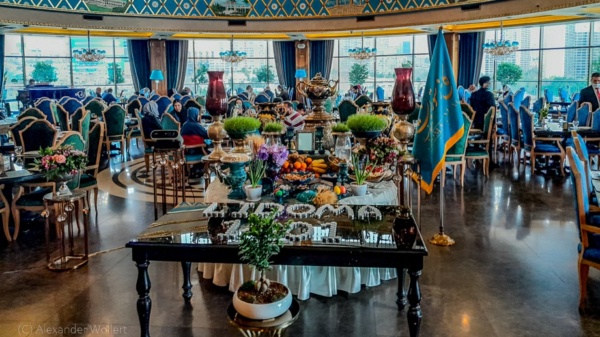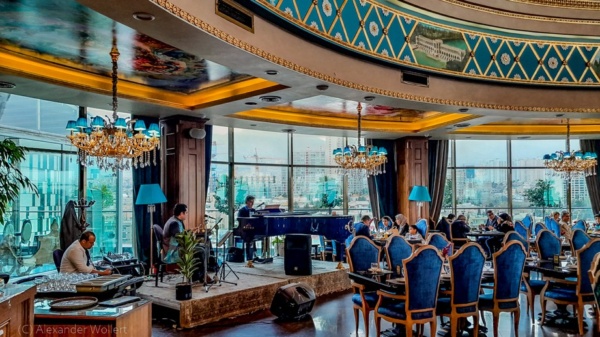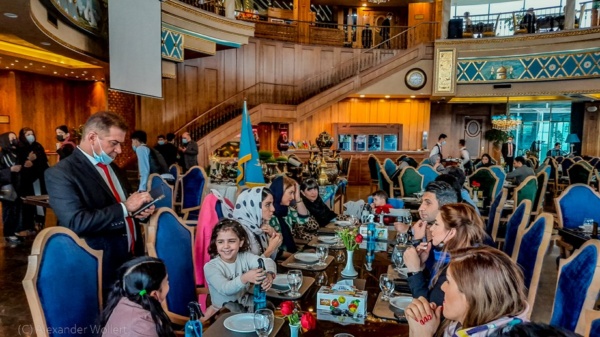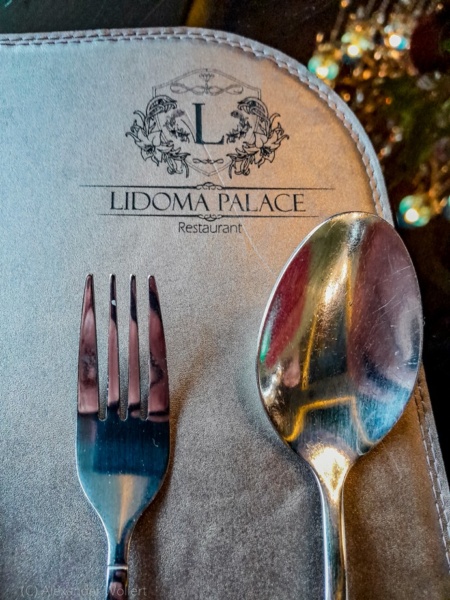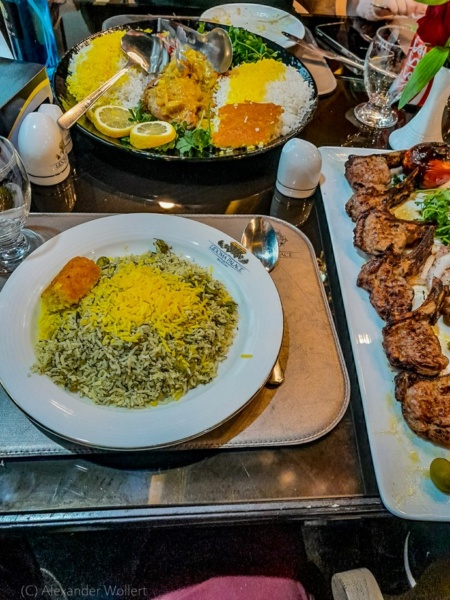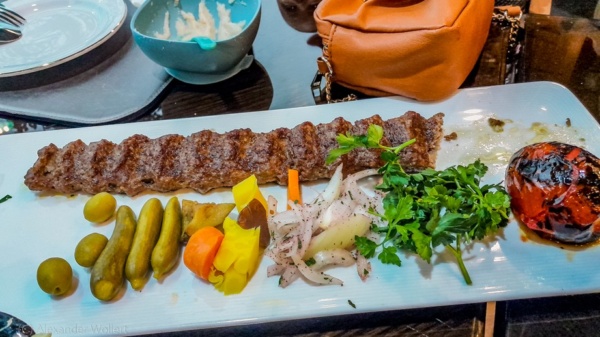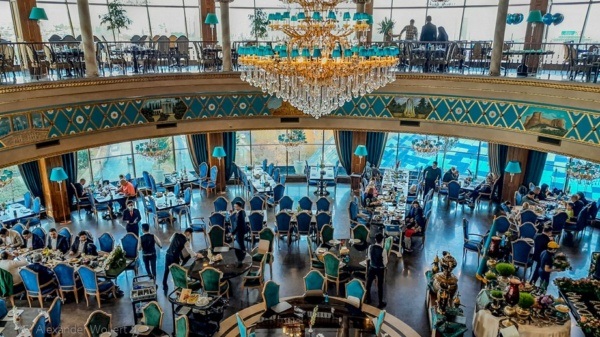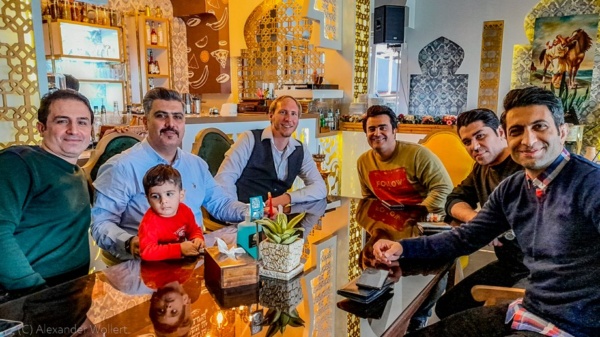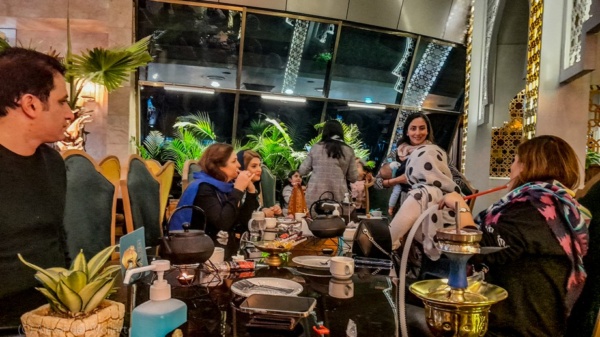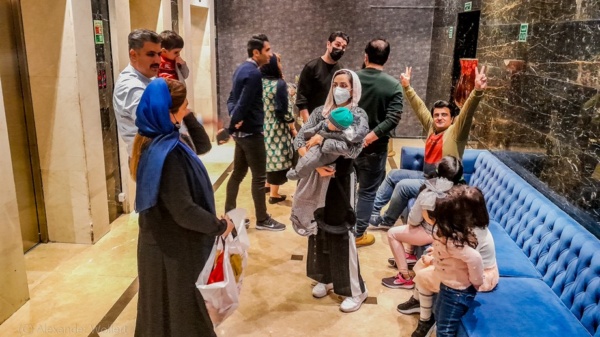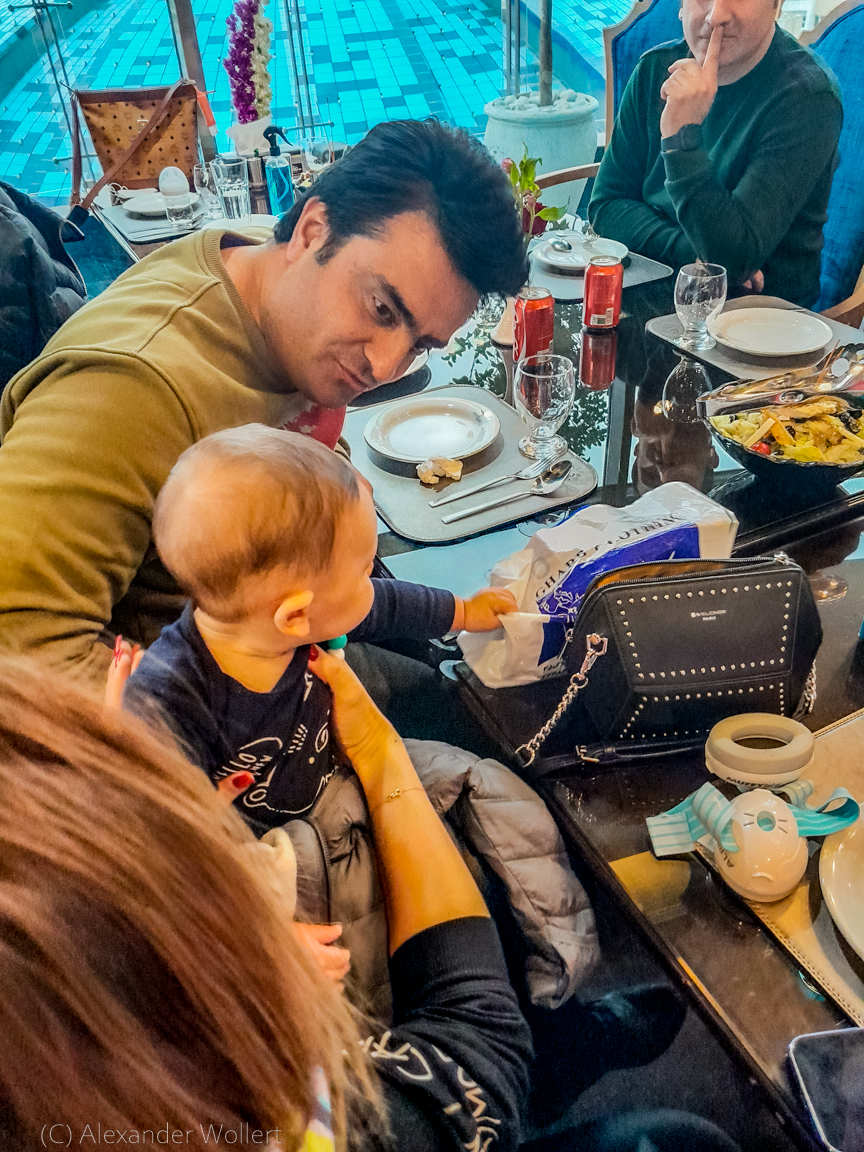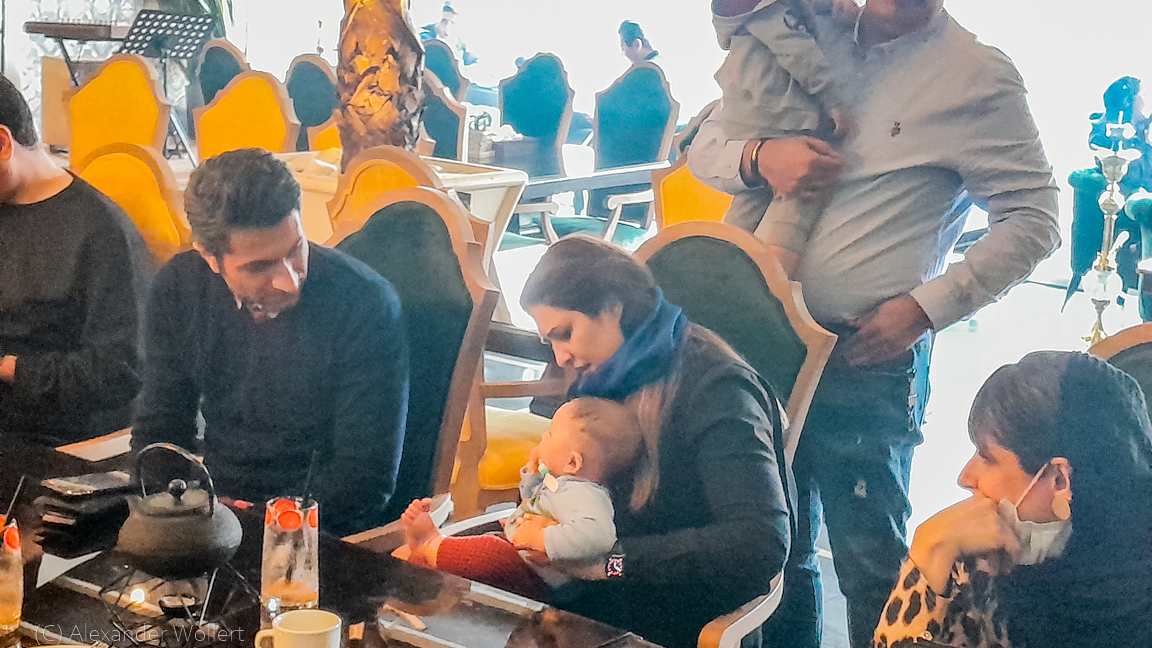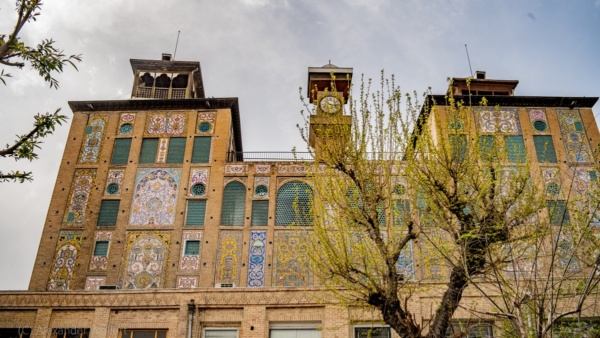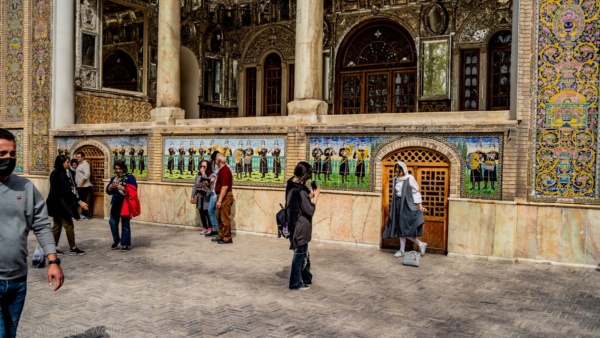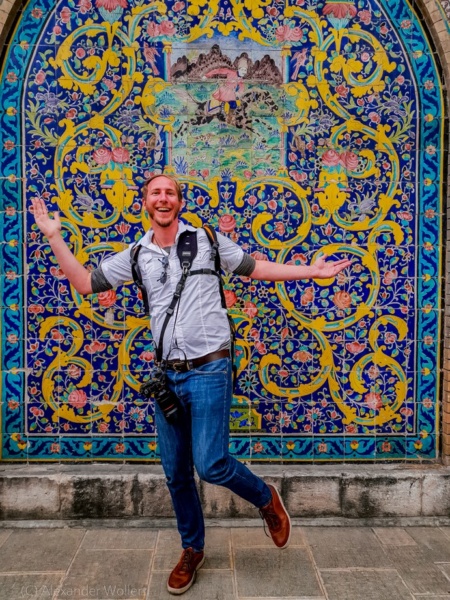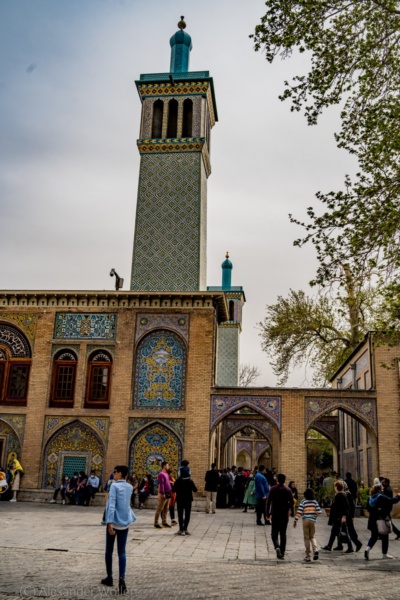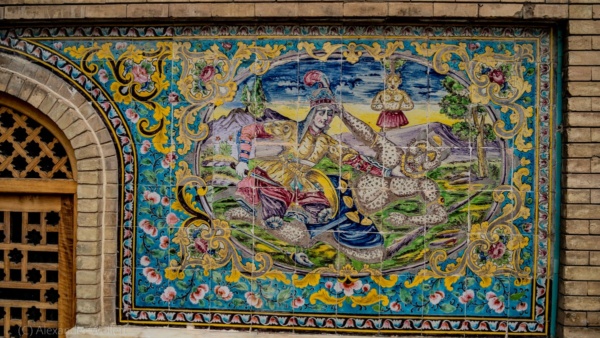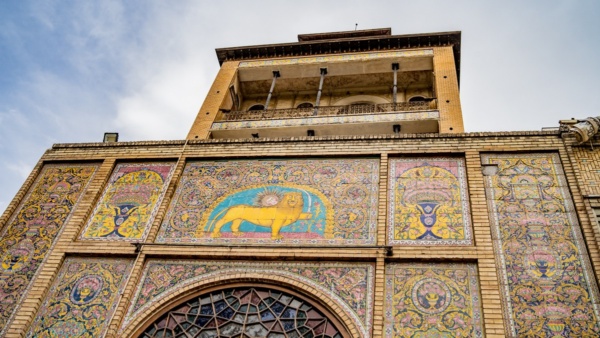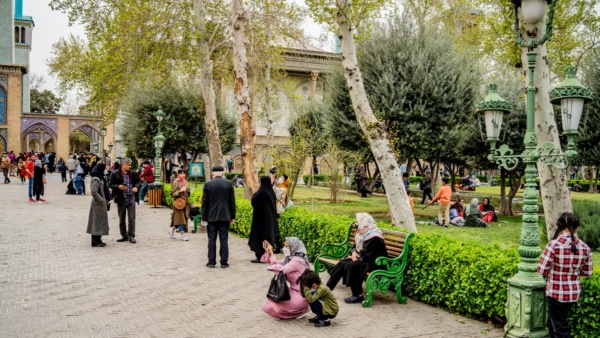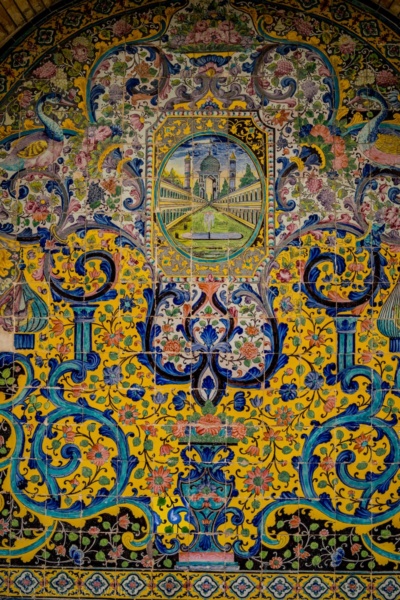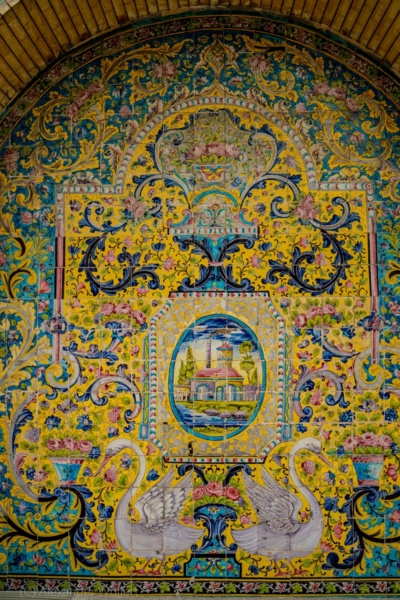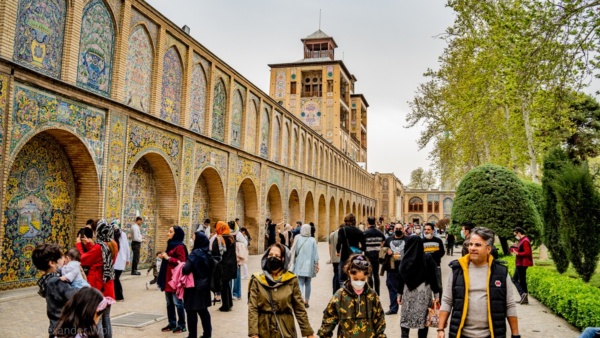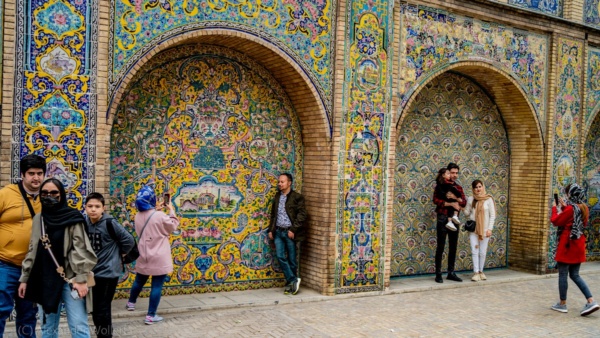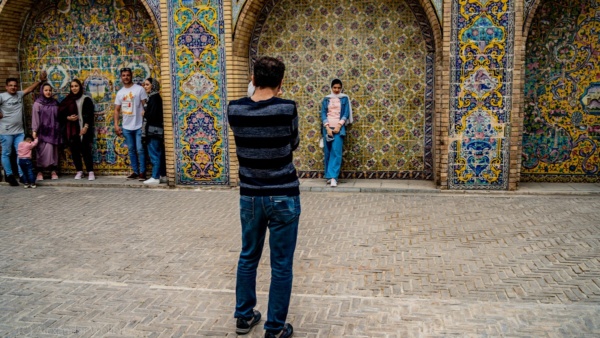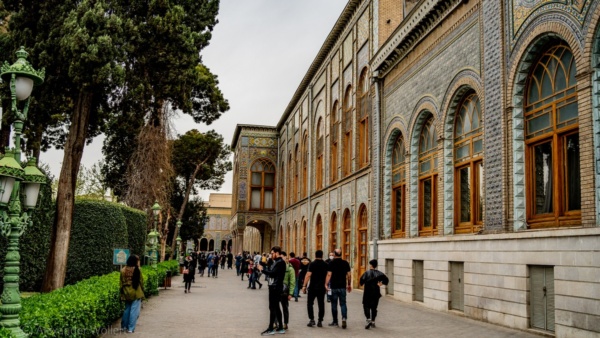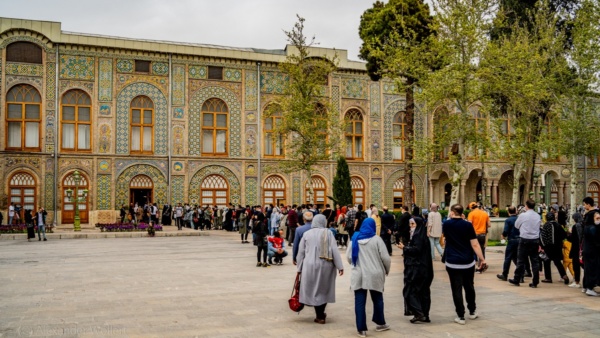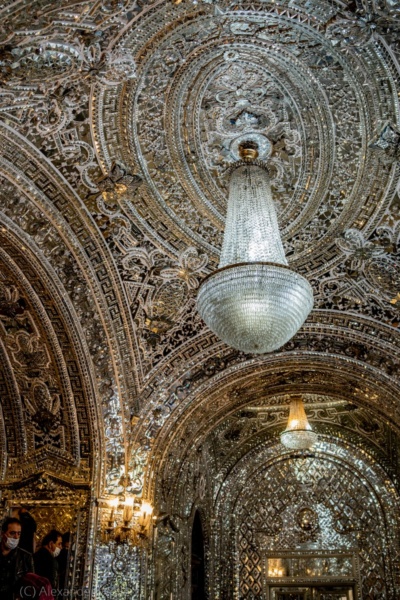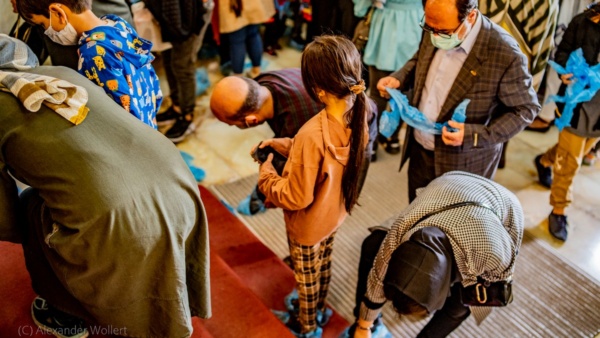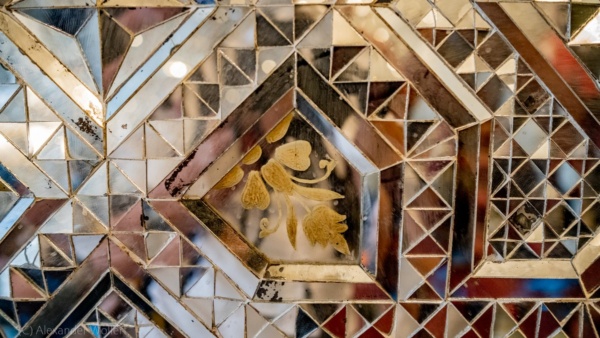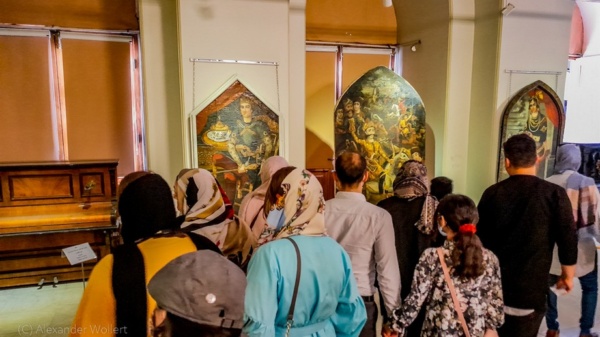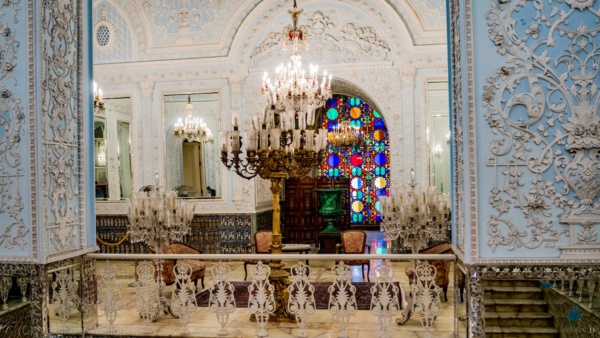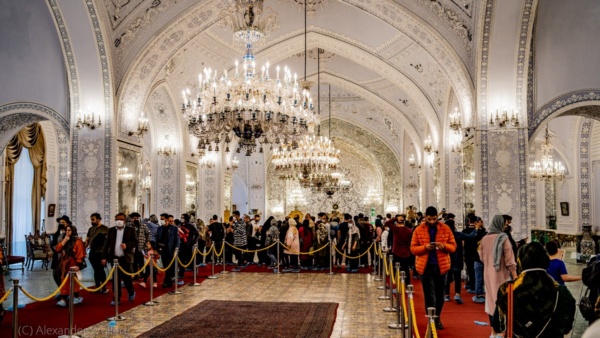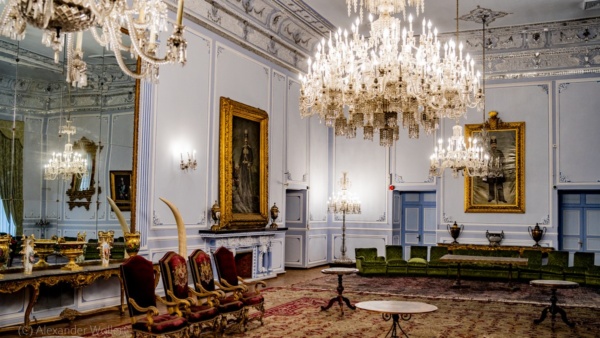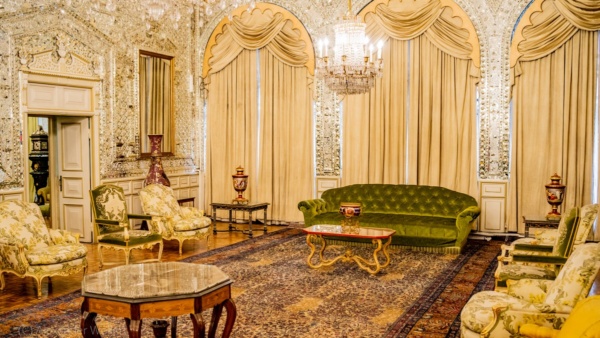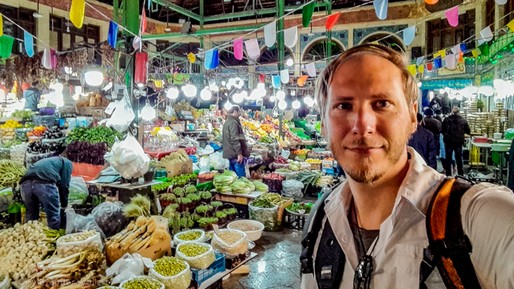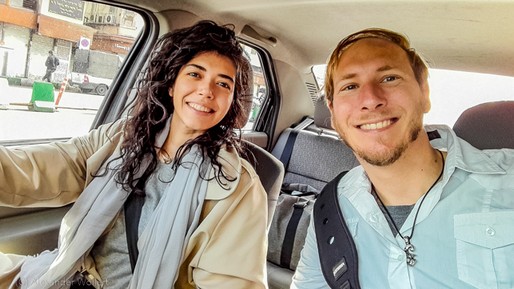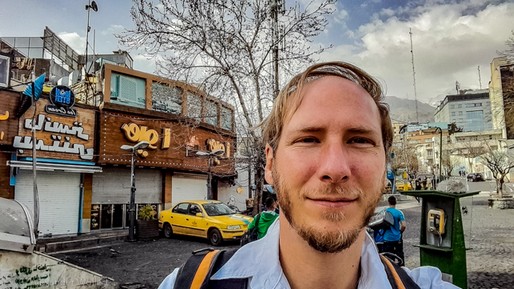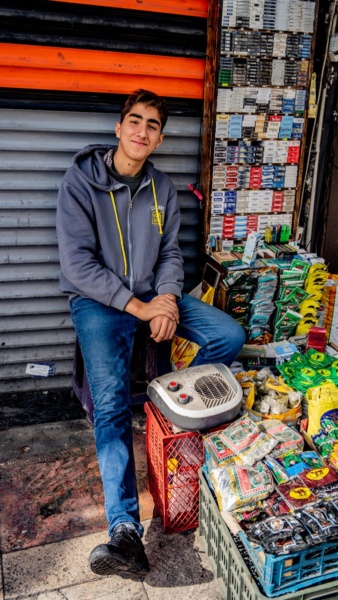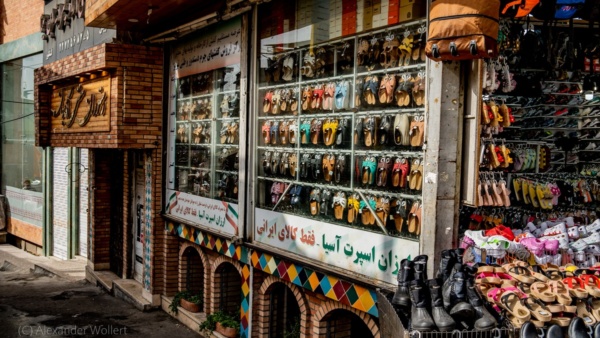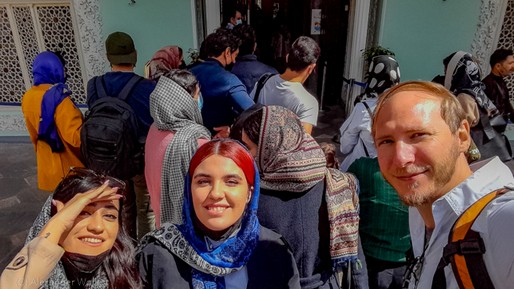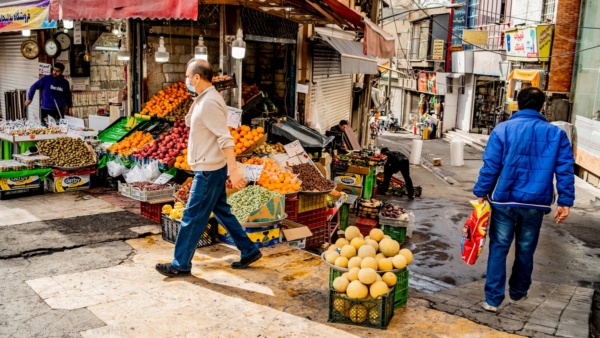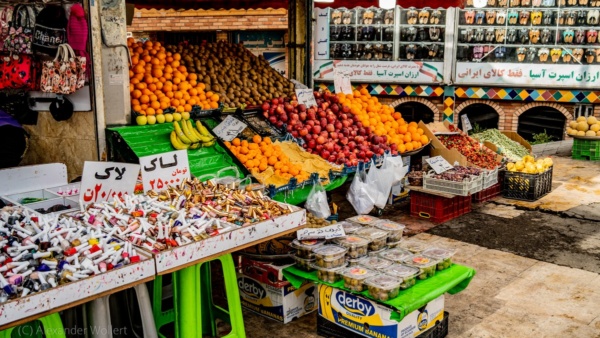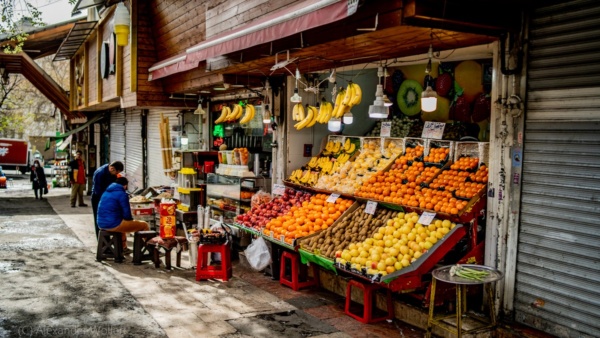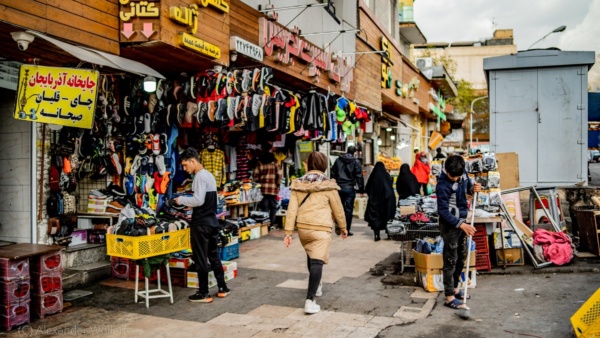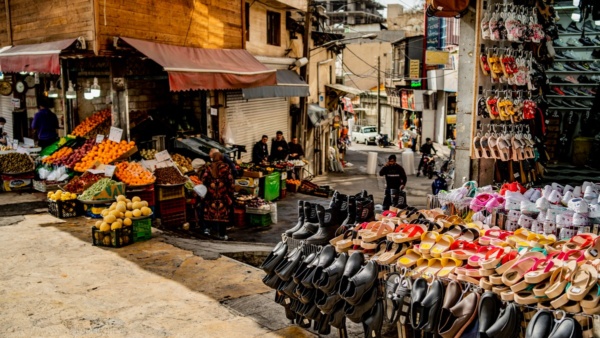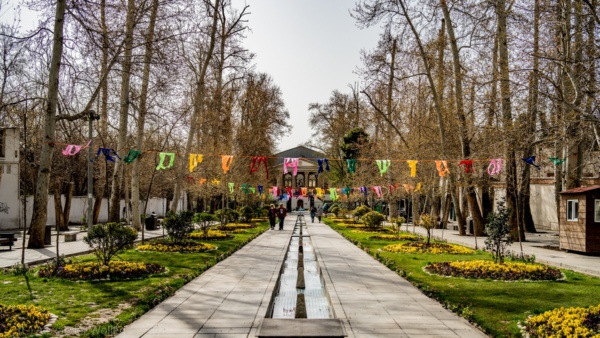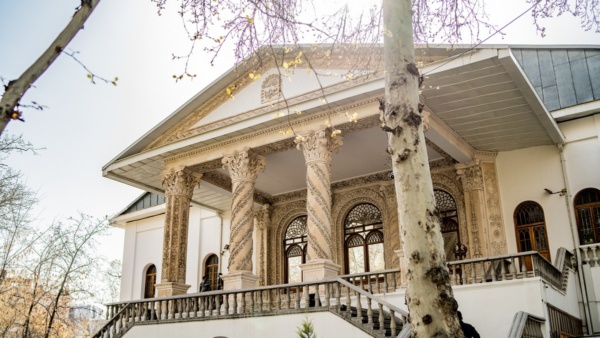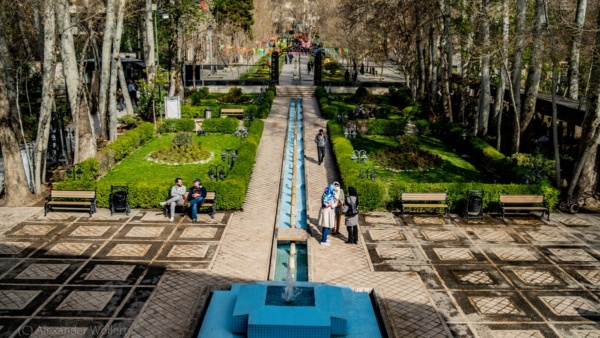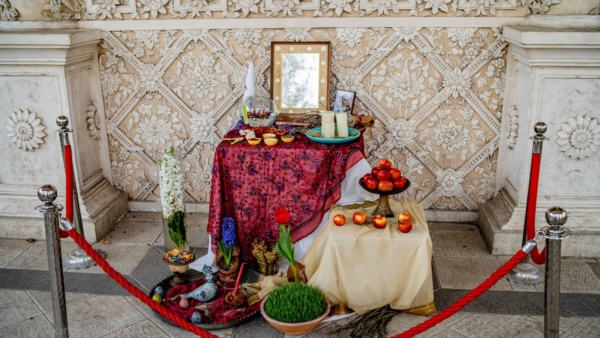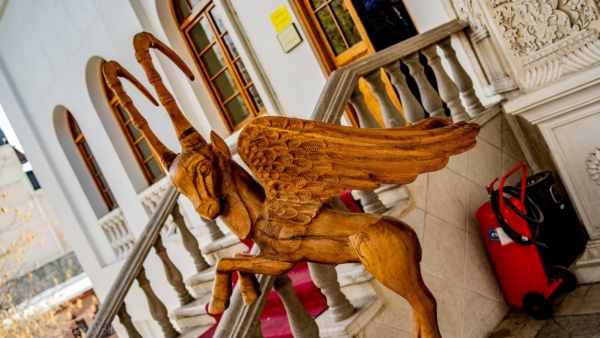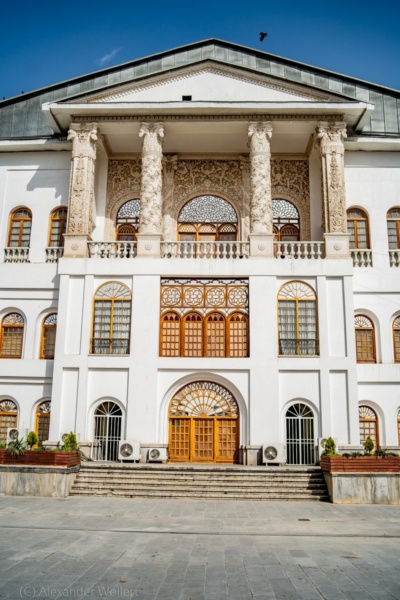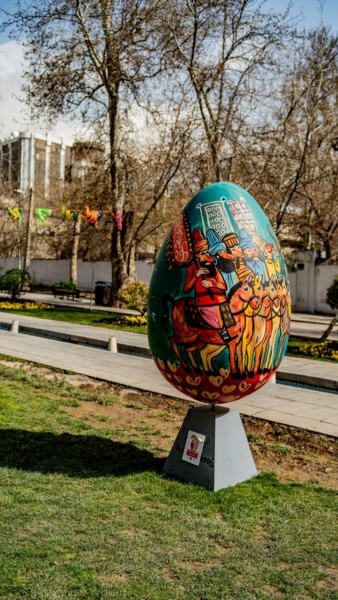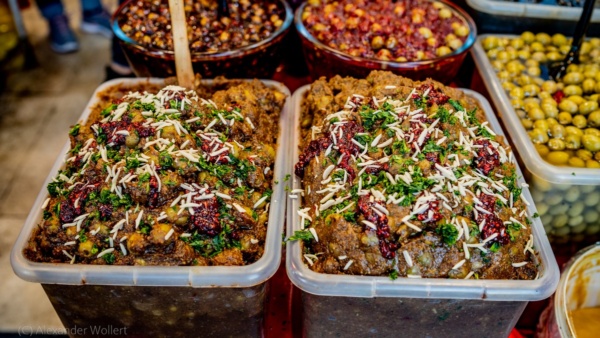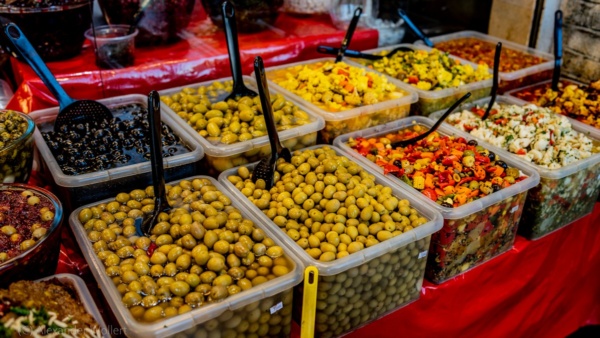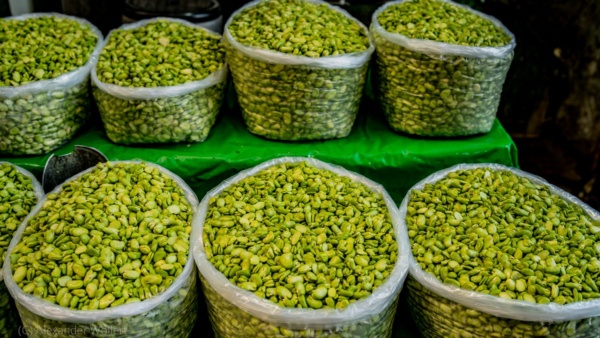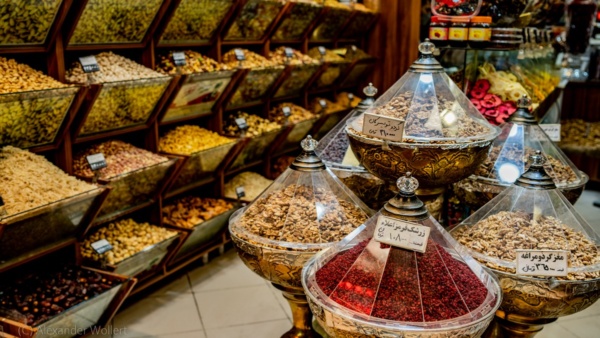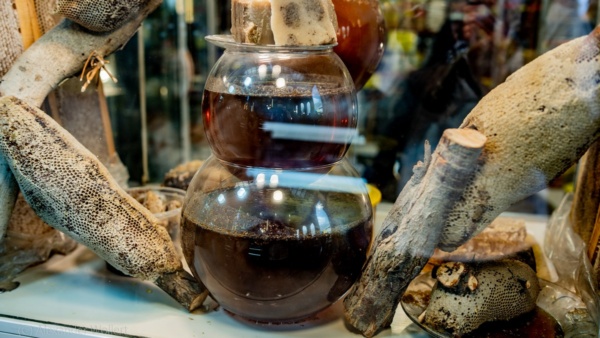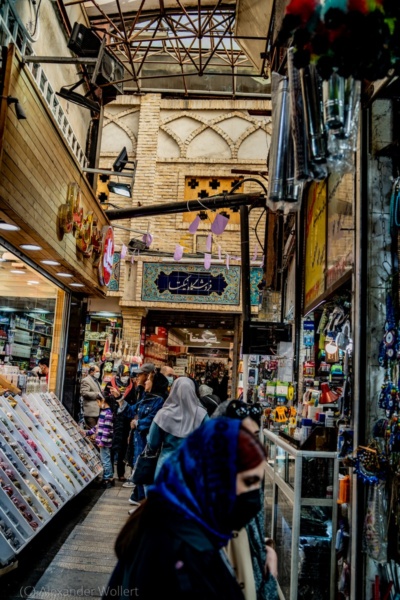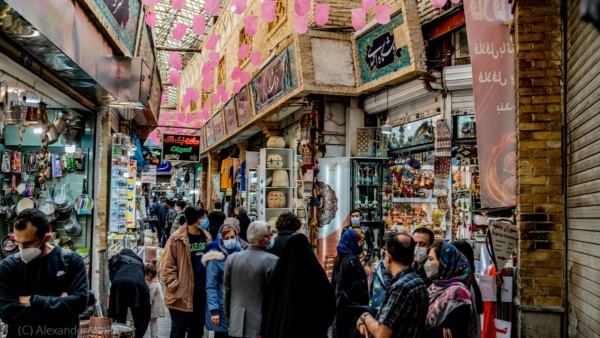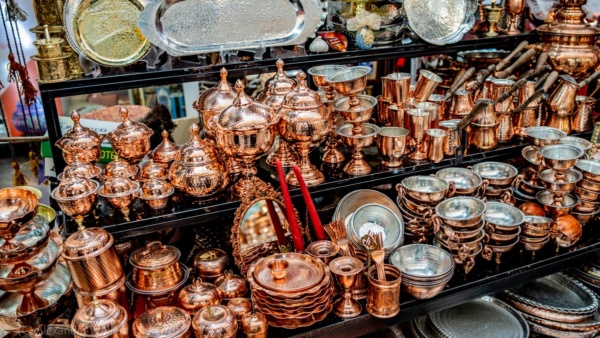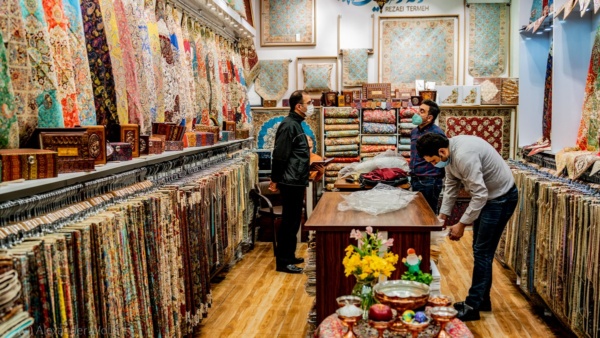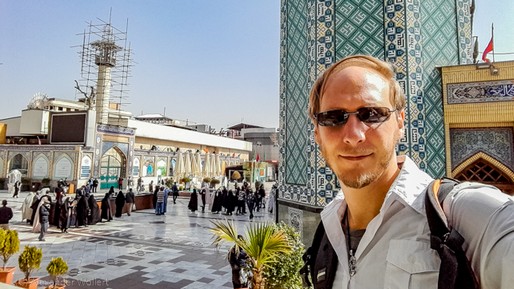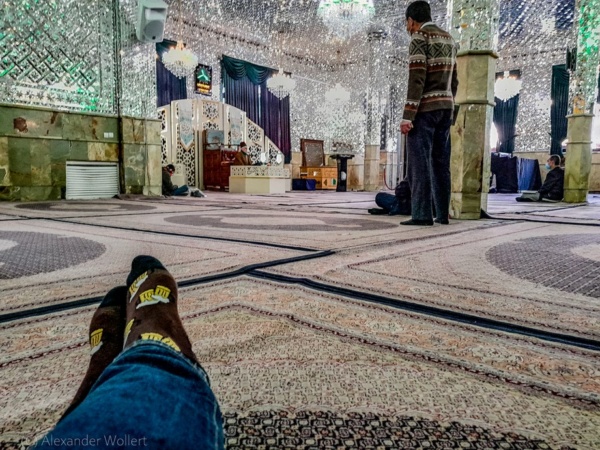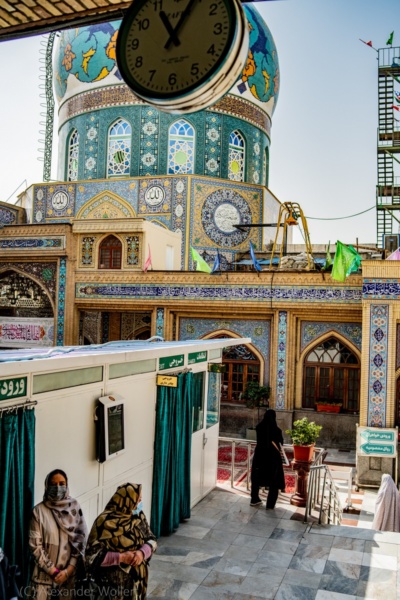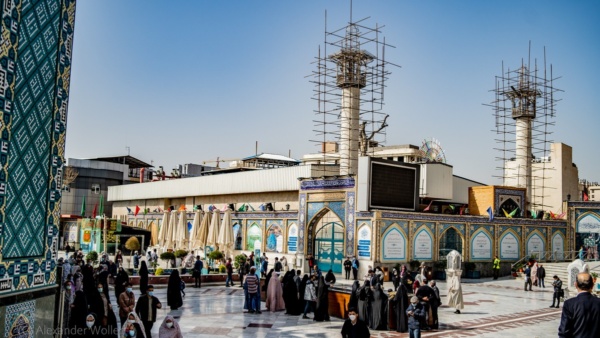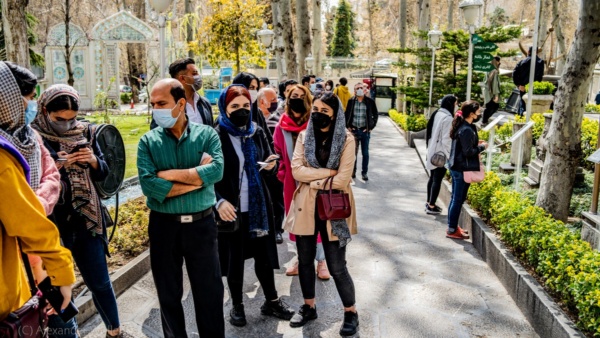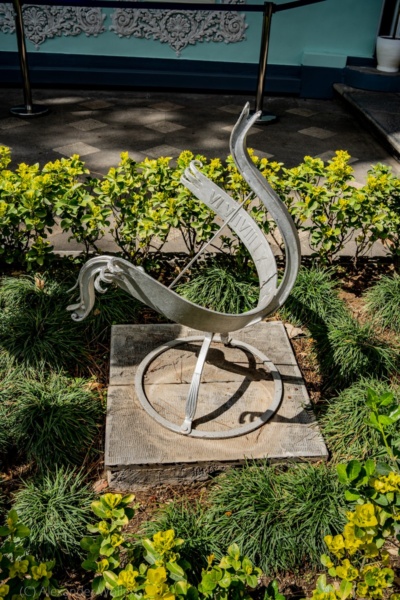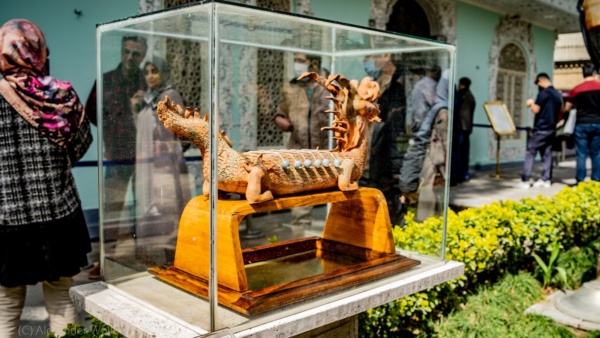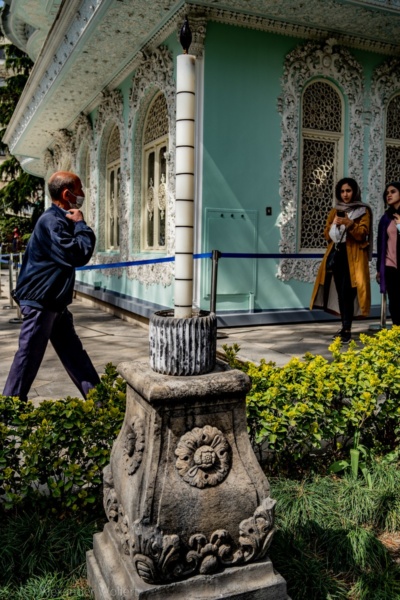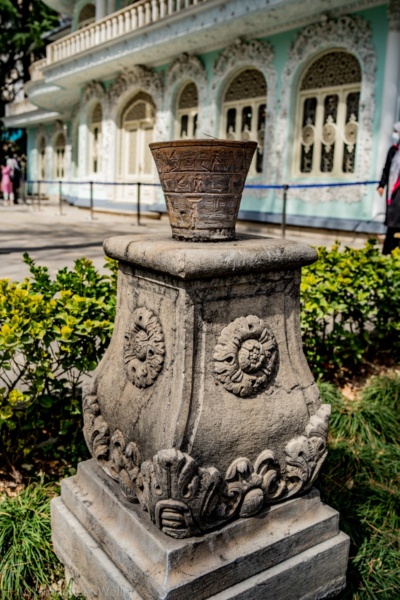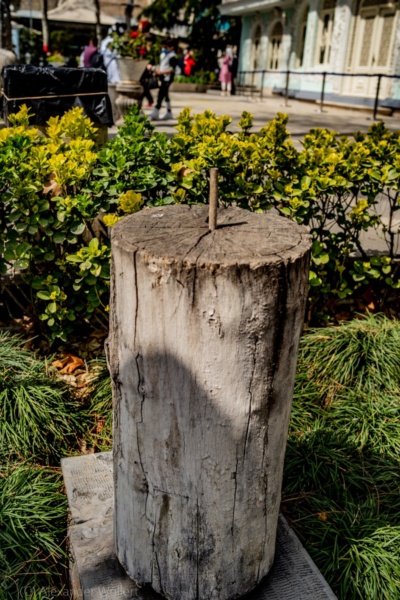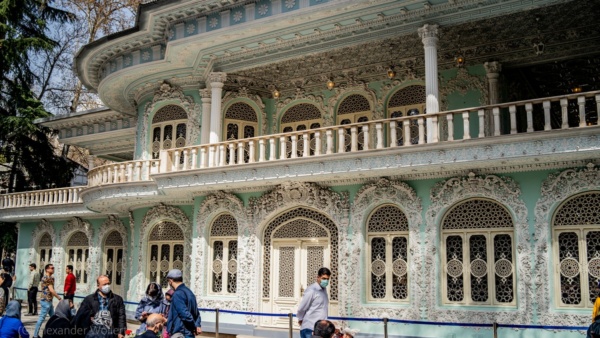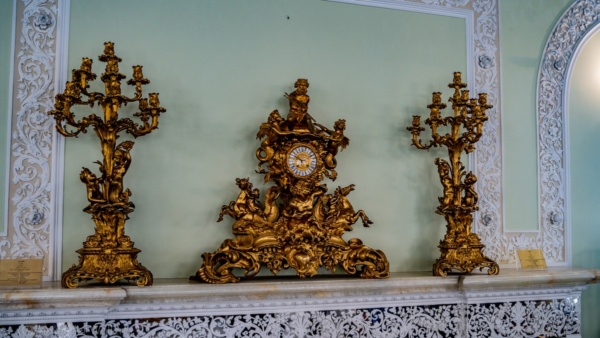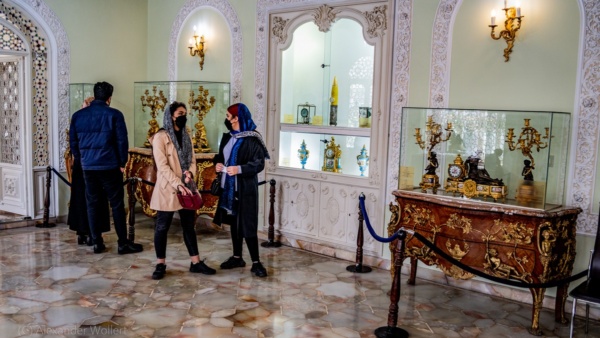Diary Entry
I had planned to explore the capital of the Islamic Republic on my own. But there is still time and a special event has just occurred. The Persian New Year has begun and I had the pleasure of celebrating the biggest festival in the country with Leon and Sara with their family in Lavasan. We visit friends and relatives in the area. In addition, we receive an invitation from Sara’s friends to have lunch together in one of Tehran’s most exclusive restaurants: the Lidoma Palace.
A table is already reserved and we arrive last. Actually, Sara had expected a different place. Whether it was spontaneously rearranged or we received the wrong information – I never found out.
Soft piano music accompanies the waiter who takes our orders. The menu is not printed on paper as usual, but burned in brass. Everyone is so happy to see each other. Sara hasn’t seen any of her friends in years and now she even has a baby with her.
The restaurant really resembles a palace. On the top floor of the Lidoma center you have an incredible view over the city, the Alburz Mountains behind it and above all the high Milad Tower, one of the city’s symbols.
Sara’s friends are incredibly kind to me too. Since it’s a big hello from many friends who are seeing each other for the first time after a long time, everyone is of course talking in Farsi. Nevertheless, I have good conversations with the men, some of whom proudly show me their vacation photos from Germany.
The meal is sumptuous and leaves no part of the stomach vacant. The men invite me to smoke a “hubble bubble” with them. For this we go to a separate room that protects the other guests from the steam of the hookahs. Little by little, the children and the women follow to eat desserts. It’s a very lush day and I have to laugh when Sara tells me in the evening that the stay only cost us 18 euros per adult.
The View over the City
Iran’s largest metropolis lies in a basin. Usually the smog is so dense that one has a cough and dirty sputum from the nose. This is how I feel after only two days in this city. It’s raining today and Tehrans consider it lucky. Dirt is flushed from the air and ground, revealing an unusually clear view.
From the roof of the Lidoma center I have a special preference of this view. The storm came quickly, raged and passed again. The sky offers fantastic contrasts.
The image I get of Tehran is that of a city of over a million people and its high-rise buildings against the backdrop of snow-capped mountains. These mountains wear a white cap even when it’s a cozy 40 degrees Celsius in the city. I have exactly this picture in front of me now, but without the usual haze.
At first glance, Tehran seems more modern and green than I thought. There are avenues and modern glass buildings are being erected in front of my nose. And that despite a catastrophic economic situation.
The Milad Tower, one of Tehran’s three most famous landmarks, stretches into the sky not far from me. The other two landmarks are the Azadi Gate and the Golestan Palace. I will visit both miracles in the next few days.
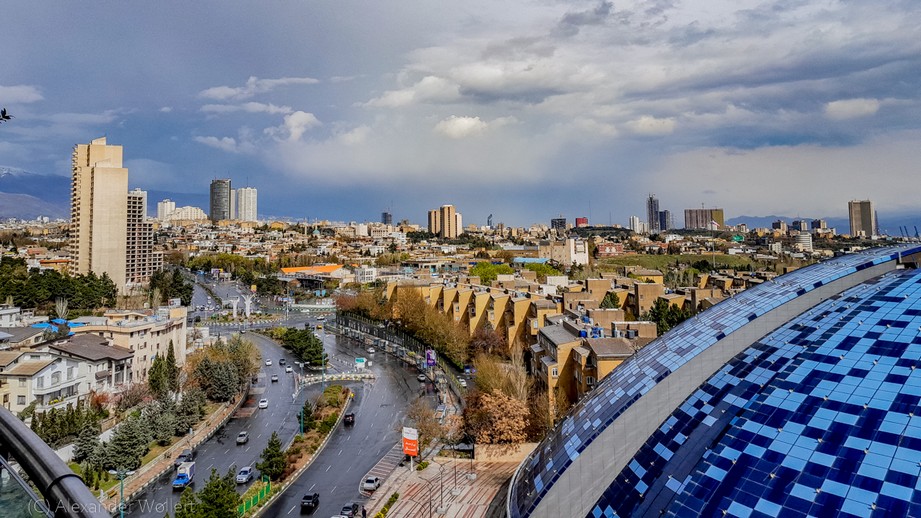
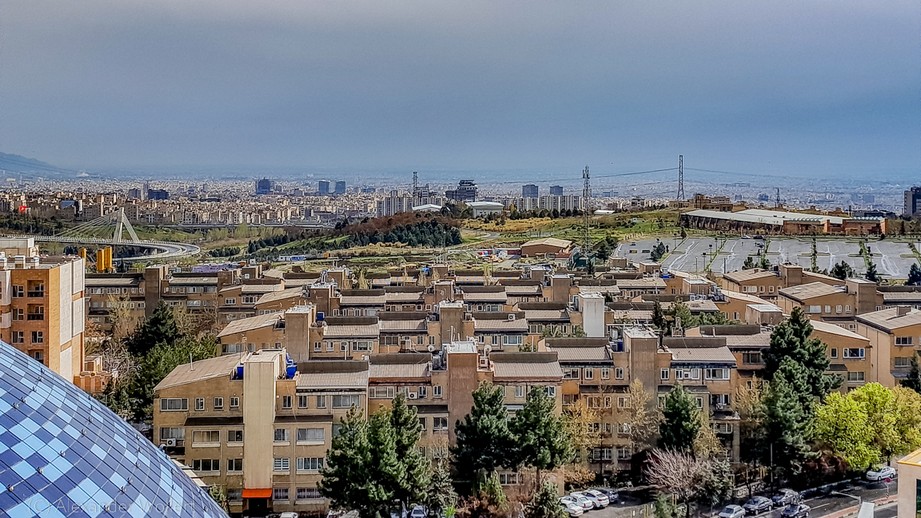
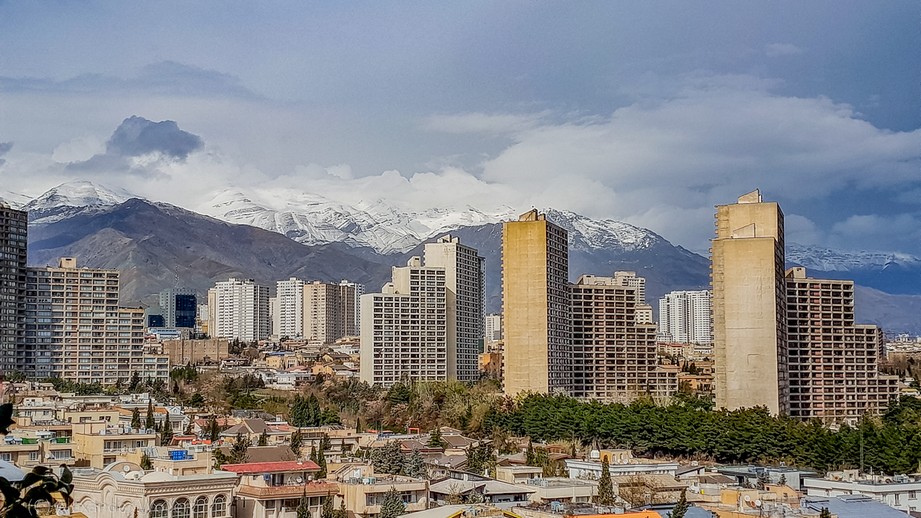
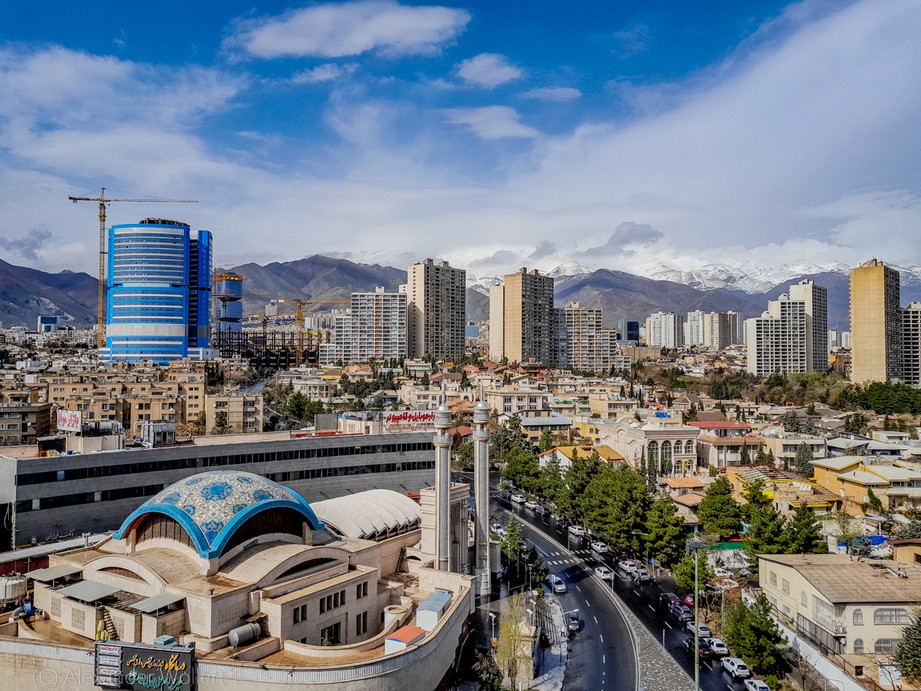
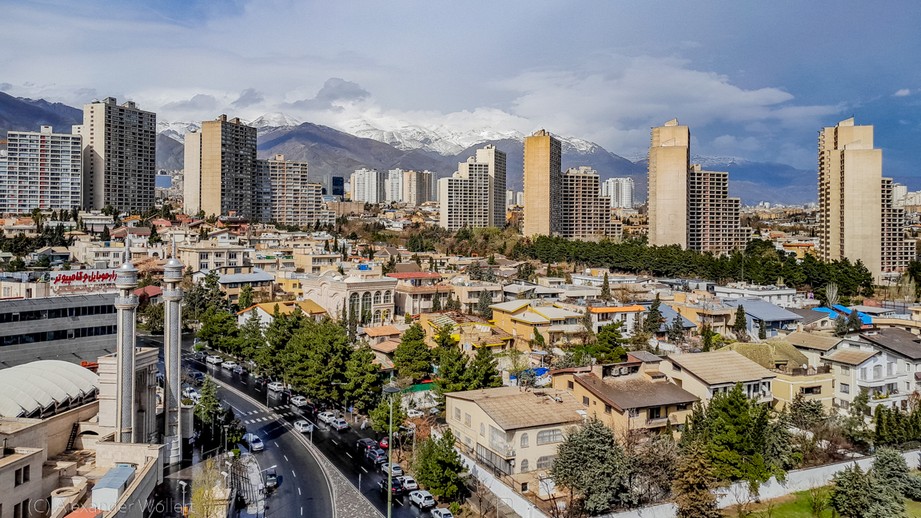
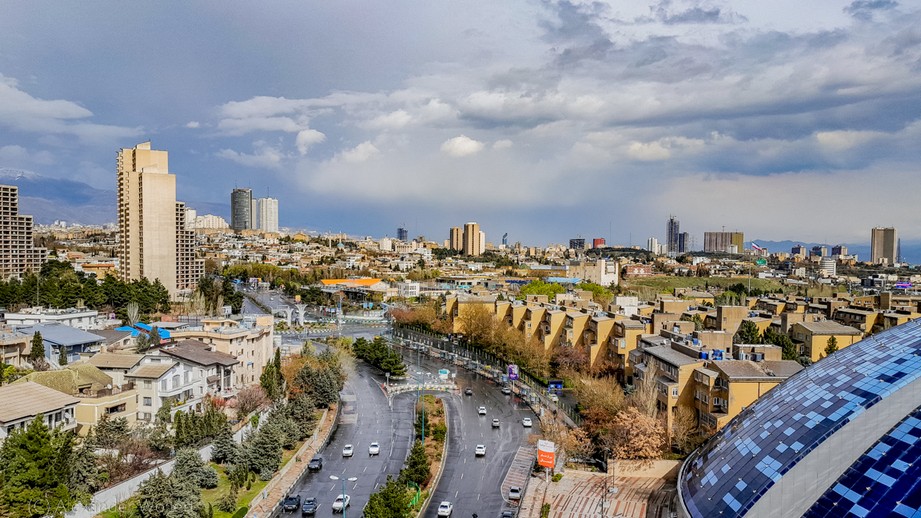

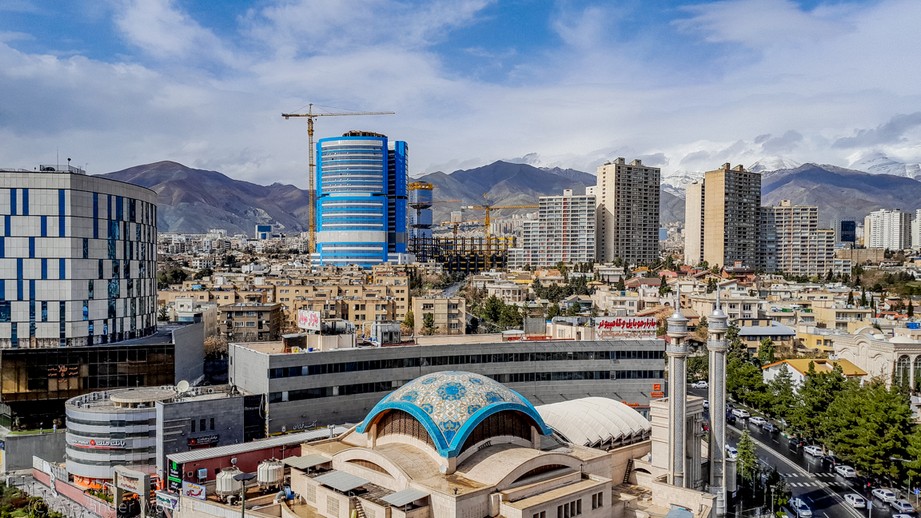
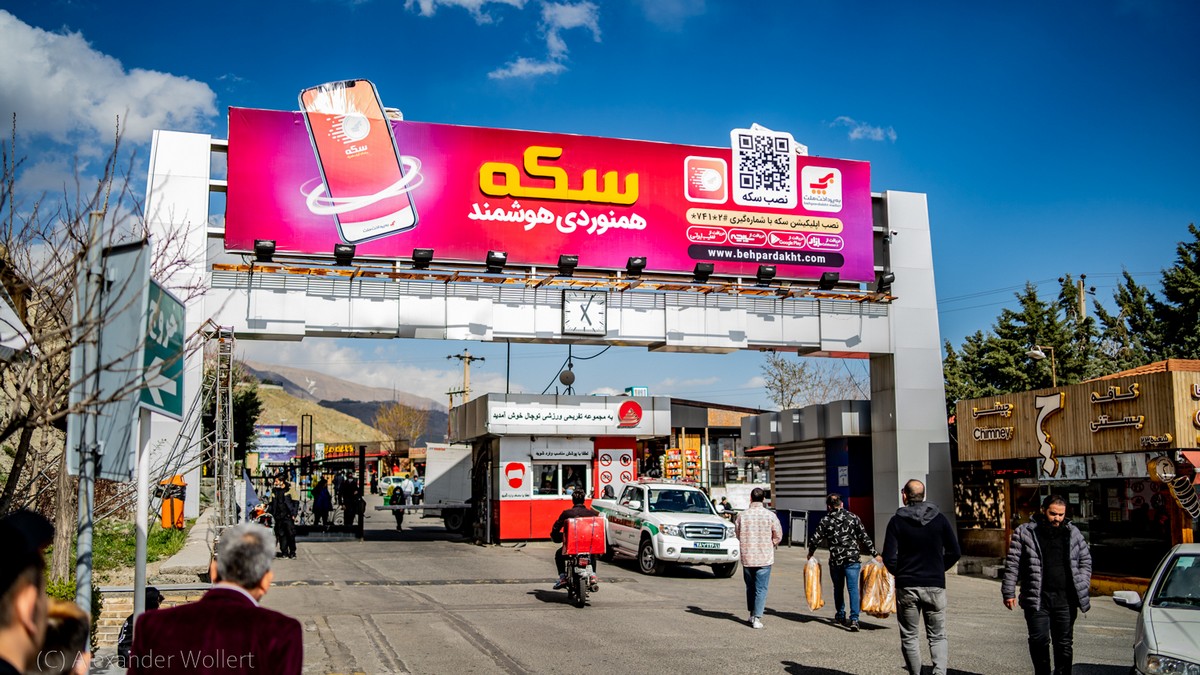
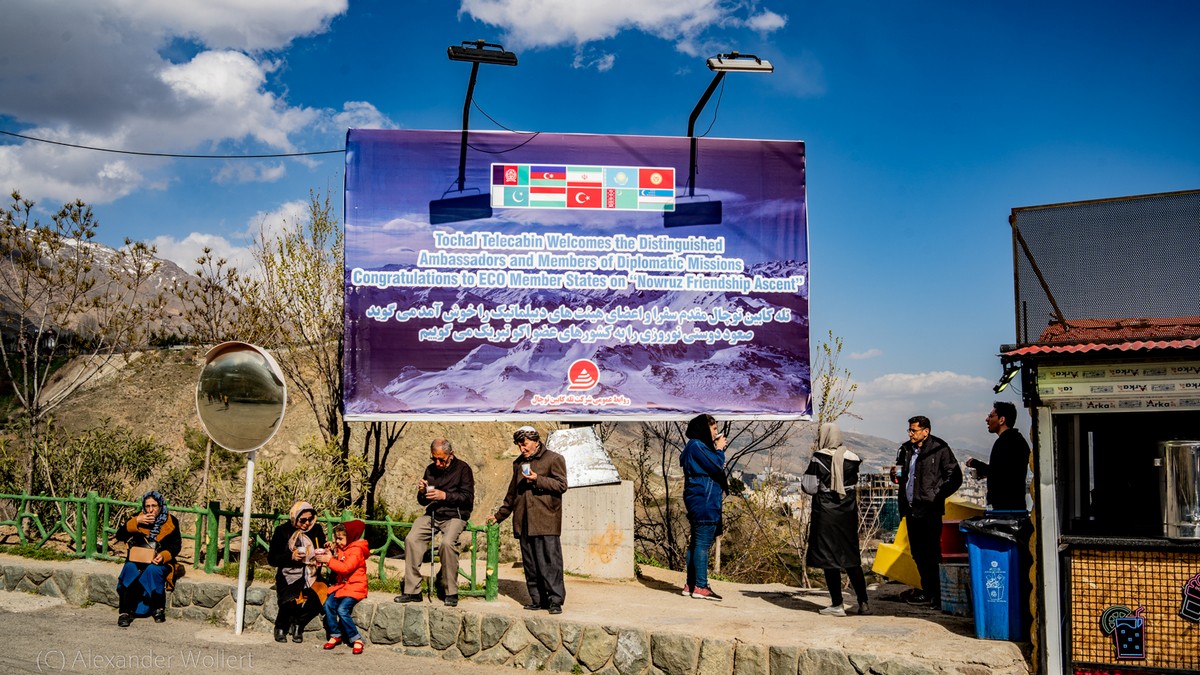
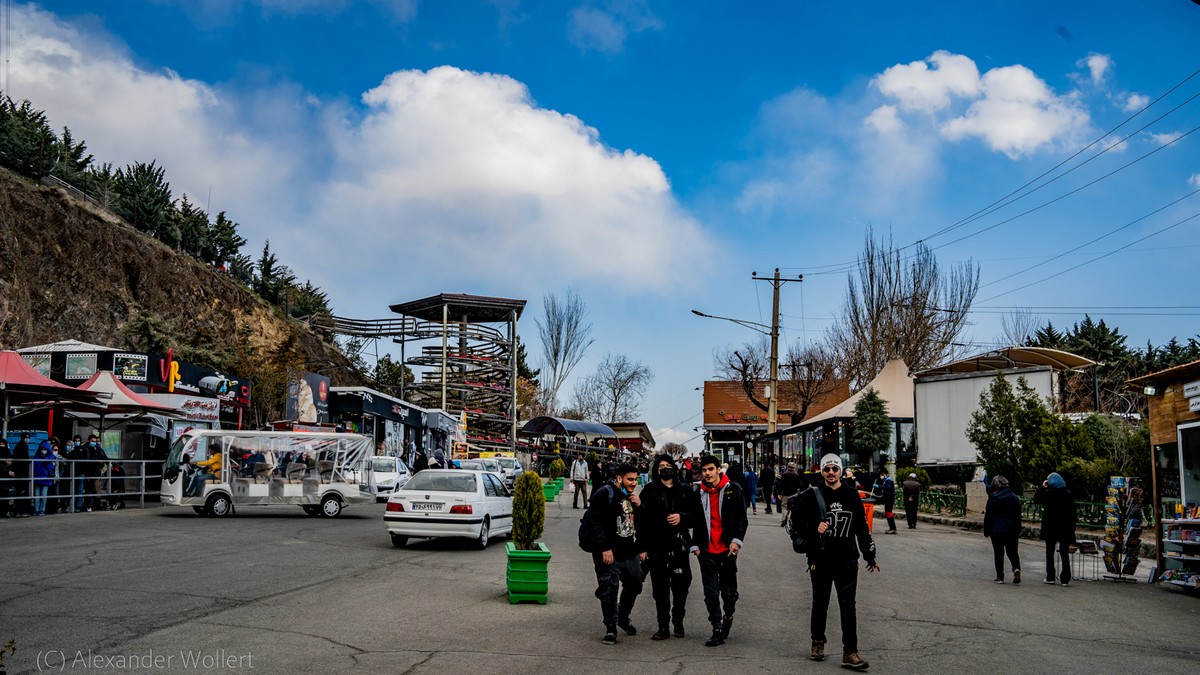

Siavash and his friend Saeid take me into town and show me their perspective. I ask if there are also discos and parties in secret and the two agree that under complicated conditions there are word-of-mouth propaganda announcements for events at dates that are still open and at constantly changing locations.
We drive through the city at night. In Berlin, young people would stand on the street, beer in hand and in front of a roaring discotheque. Here, young people gather in cafes and share cappuccinos while music comes from flashy cars cruising the streets. Nobody here can afford a foreign car, let alone a luxury model. Anyone who drives around here must have a lot of money. The king is said to be the Mercedes G-Class. “If you drive it, every girl will jump off the street and into your car,” I learn. The big question is where the money will come from. The economy is on the rocks, the sanctions hardly allow any business between Iran and other countries. Exciting.
The two suggest going to the Bame entertainment district the next day. In the north of the city the mountains rise and the last houses in the city nestle against the mountains. If you drive up the serpentines you will reach the village of Bame. It is an entertainment district with forms of entertainment such as roller coasters, carousels and virtual reality adventures. Behind it, ski lifts take winter sports enthusiasts up to the slopes high on the mountains. Unfortunately, we are too late to go up and Saeid, despite his size, is sensitive to the cold and does not have a jacket with him.
I marvel in the other direction and let my eyes wander over the city. Normally, the smog hangs over the city like a bell, as it is surrounded by mountains and has hardly any wind. However, it stormed and rained a few days ago, so visibility is still exceptional.
The Milad Tower can be seen in the distance. That’s the only landmark I can see from here. But the 14 million metropolis stretches to the horizon on all sides.
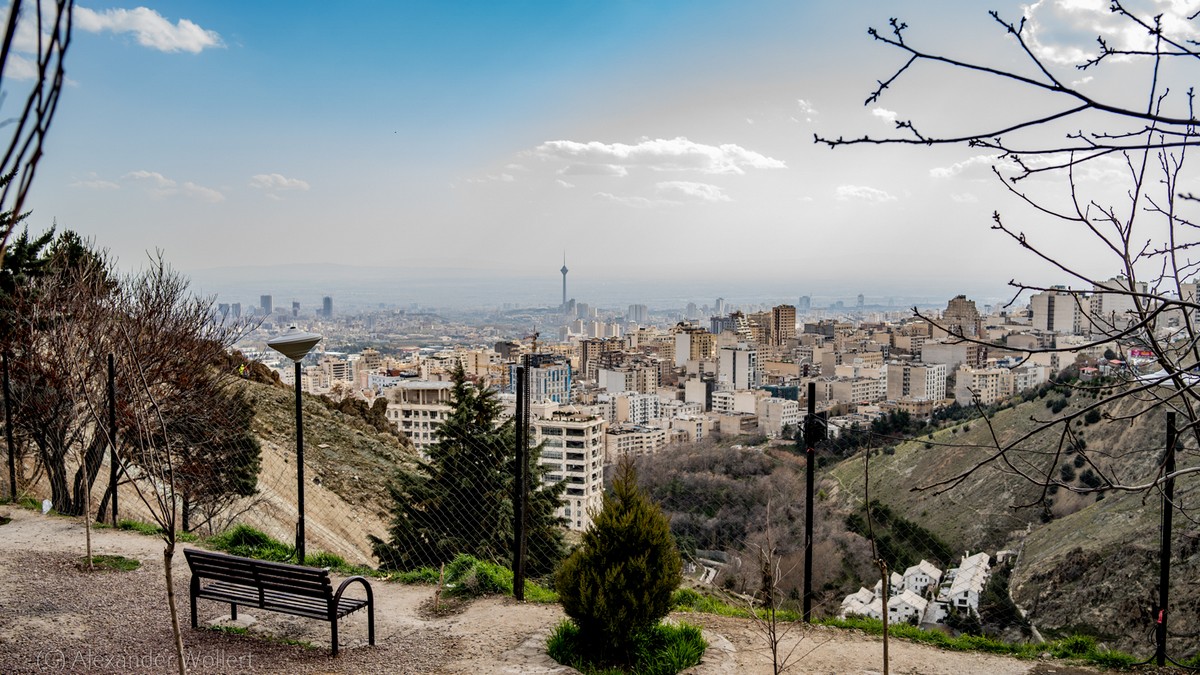

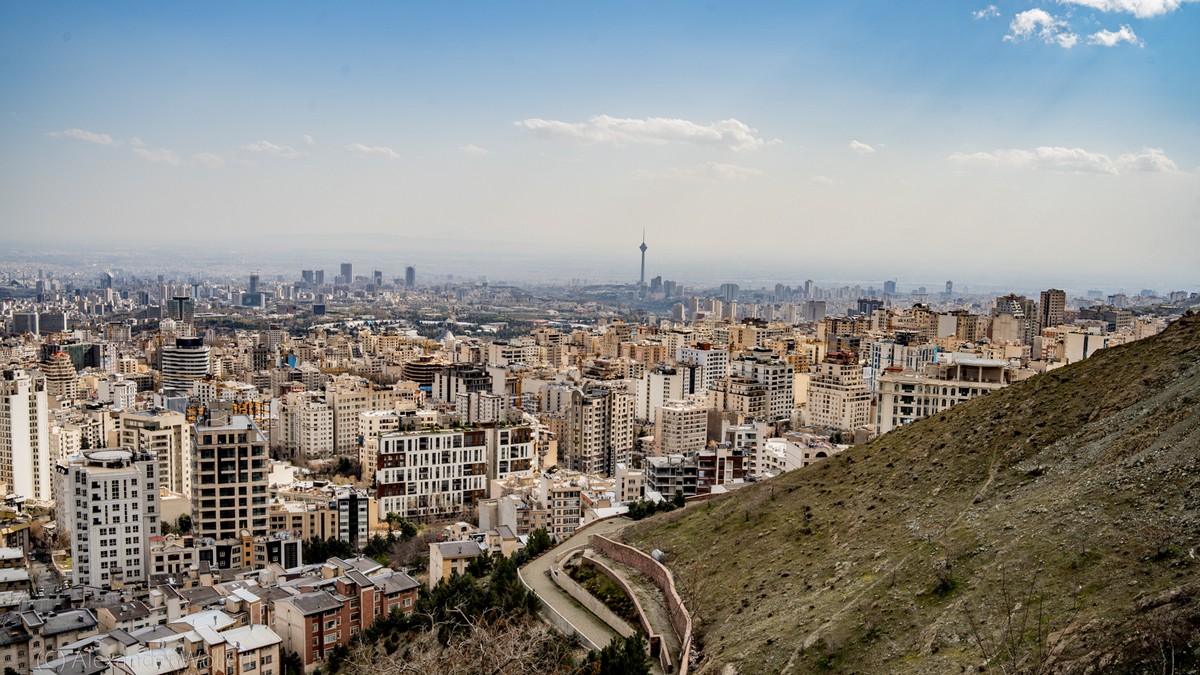
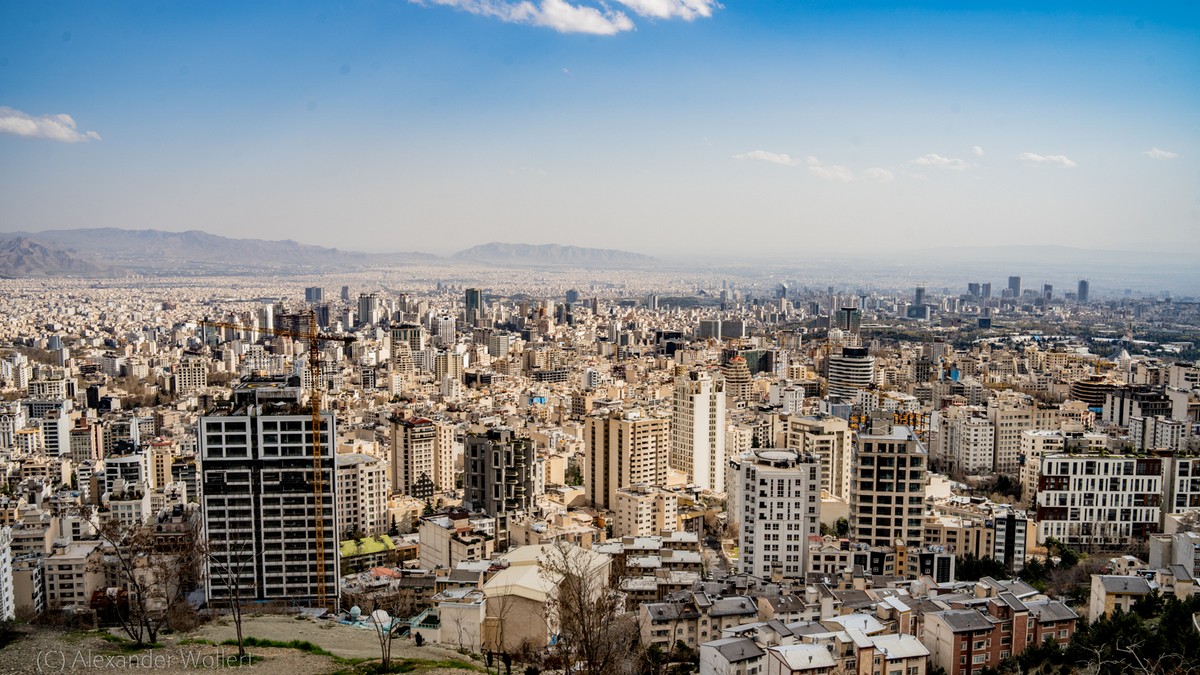

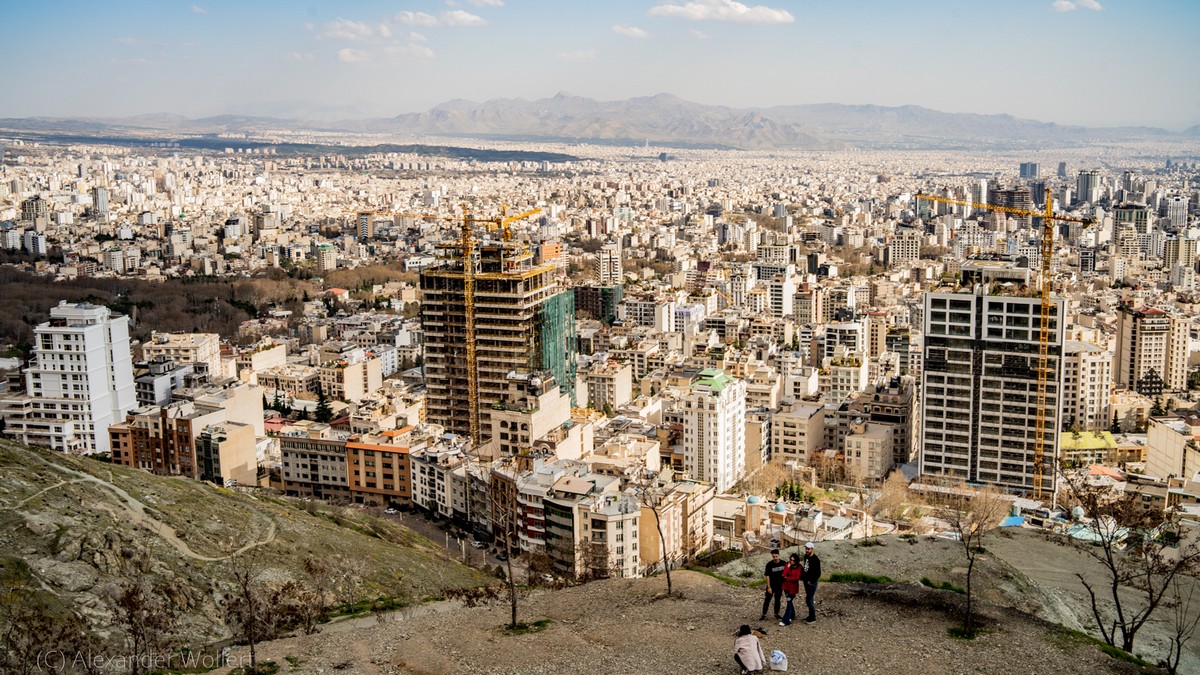
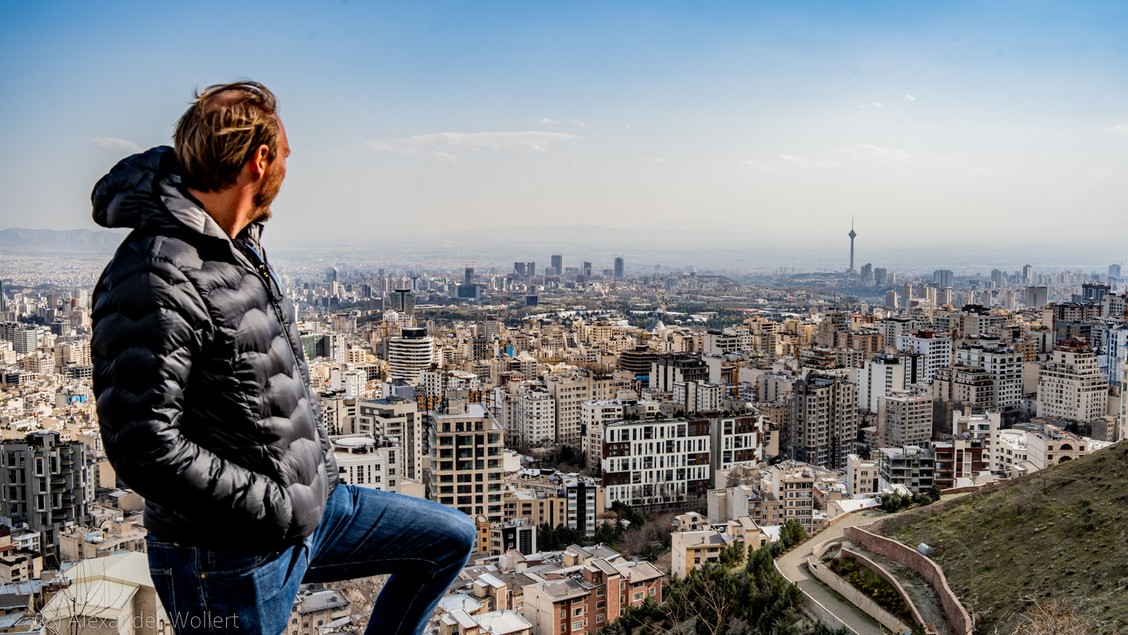
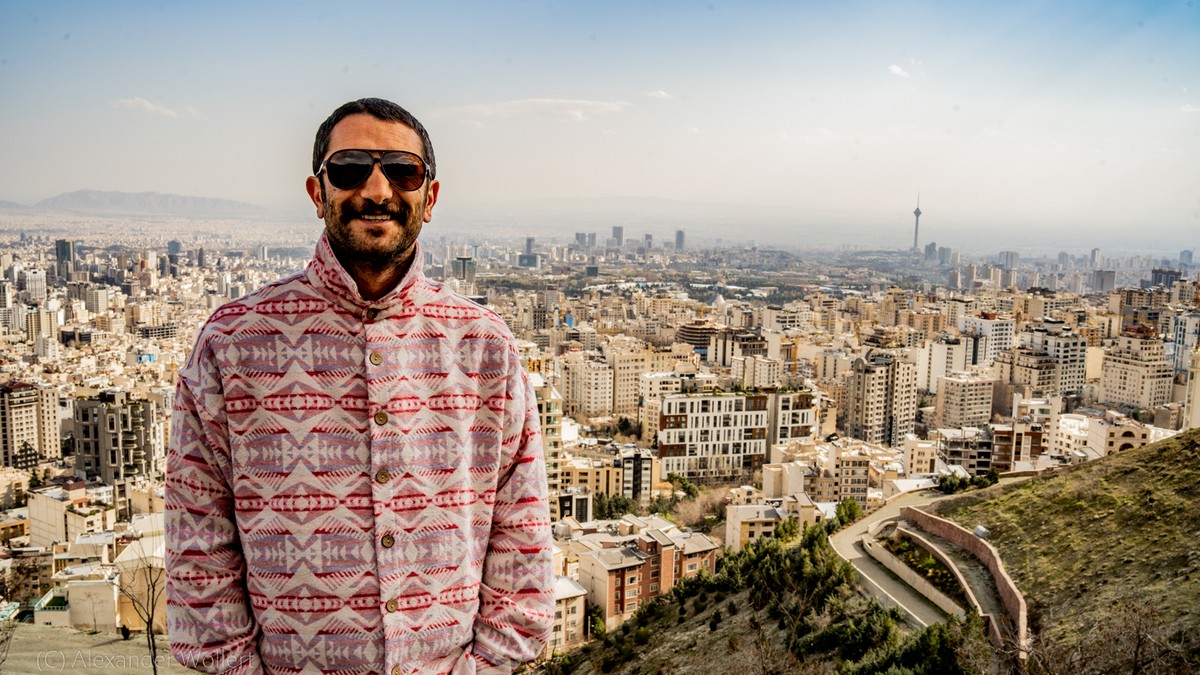

We are on our way back home after visiting friends out of town. I ask Hossein to stop at Azadi Gate as we pass there. It’s night and the landmark is illuminated. It offers a beautiful photo.
Only a few others cavort here. The gate is on a huge traffic island and far away from the city center. That’s fine with me and I’m happy about the motif.
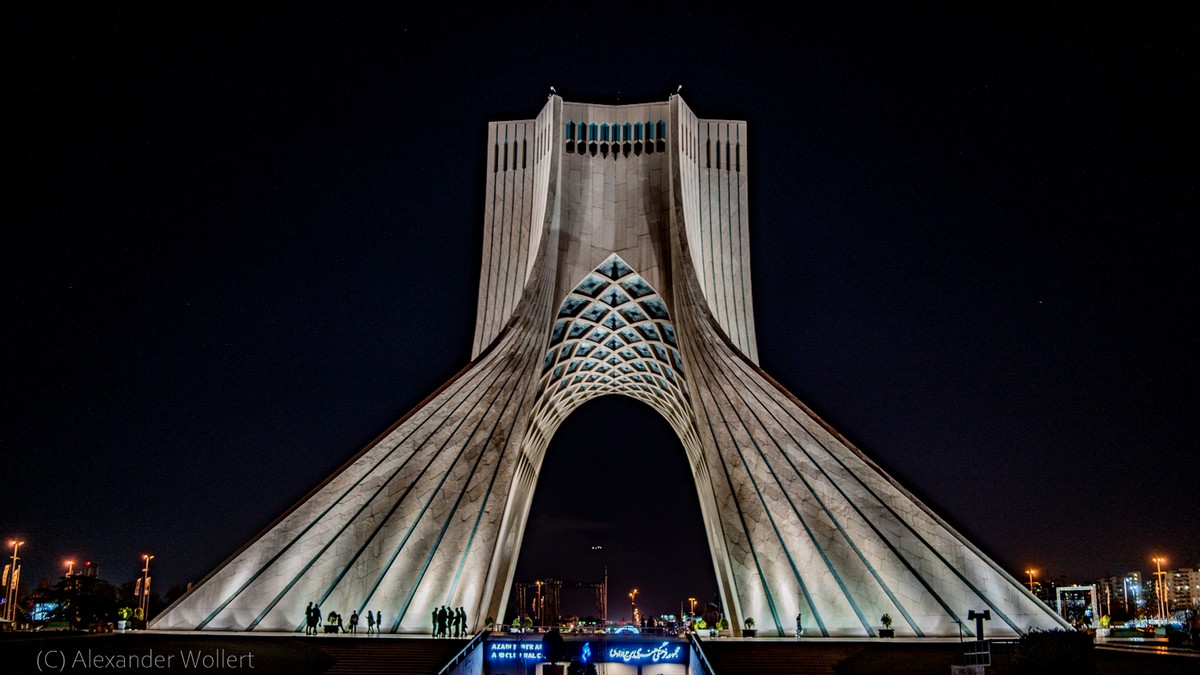

The Heart of the City
I would like to couchsurf in Iran again, like I did in 2018. Some people in the capital are also responding to my request, but not as many as I would have thought. I suspect that because of Noruz, many Iranians are with their families. My travel guide mentioned at the time that you can visit Iran at any time of the year, except at the turn of the year. This is my second time here and I have a great time. Then how much better does it have to be at any other time? I’ll have to find that out in the future.
Neda and Paymen invite me to their apartment and even have the luxury of my own room. The large apartment is part of a large concrete complex, which forms its own district as if by copy & paste dozens of times in a row. Between the complexes there are small shopping streets with bakeries, supermarkets, banks and everything else you need to live. Everyone who walks the streets or shops here lives in one of the apartments in one of these complexes, which are all the same. It may be the same apartment, but there are many kilometers between complex 1 and complex 42.
Paymen arrives from the airport late at night after returning from a business trip in Turkey. Meanwhile I am being entertained by Neda. She cooks me badamjan (eggplant casserole) and kuku sabzi (parsley tortilla) and we chat about activities. Her English is not very good, so our conversations are a bit difficult. She impresses me deeply with the fact that she has already been six times on the Damavand, the 5610 meter high volcano in the Elbrus Mountains. This mountain is a monster and you have to consider the height if you want to climb it. I’ve already read a lot about the mountain and had toyed with climbing it myself because it’s relatively easy for a 5000m peak. But you need a lot of time to get used to the altitude in between and should plan a few days of acclimatization.
Neda disagrees, reporting that the last time she even walked to the top and back in one day. 22 hours straight. Unbelievable.
Paymen is about to buy a house in Hamburg Norderstedt. I help him write a letter of recommendation to support permanent residency.
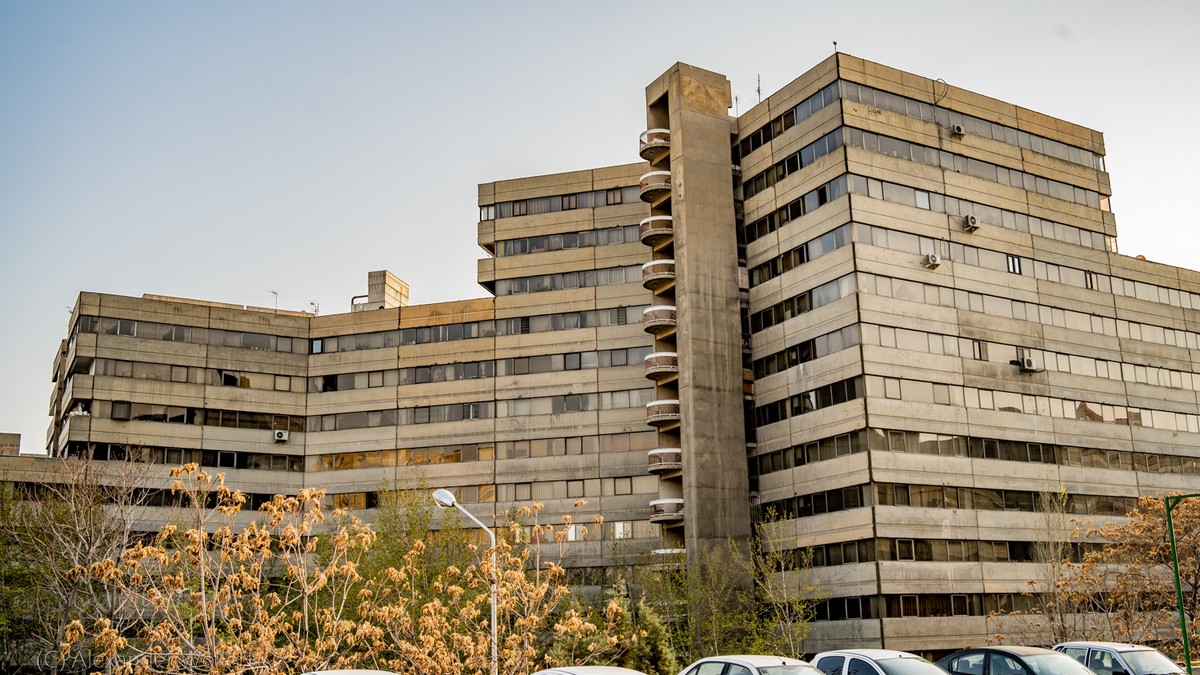
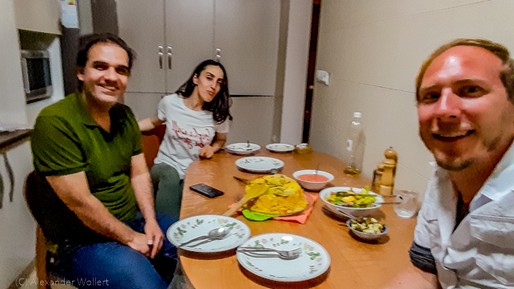
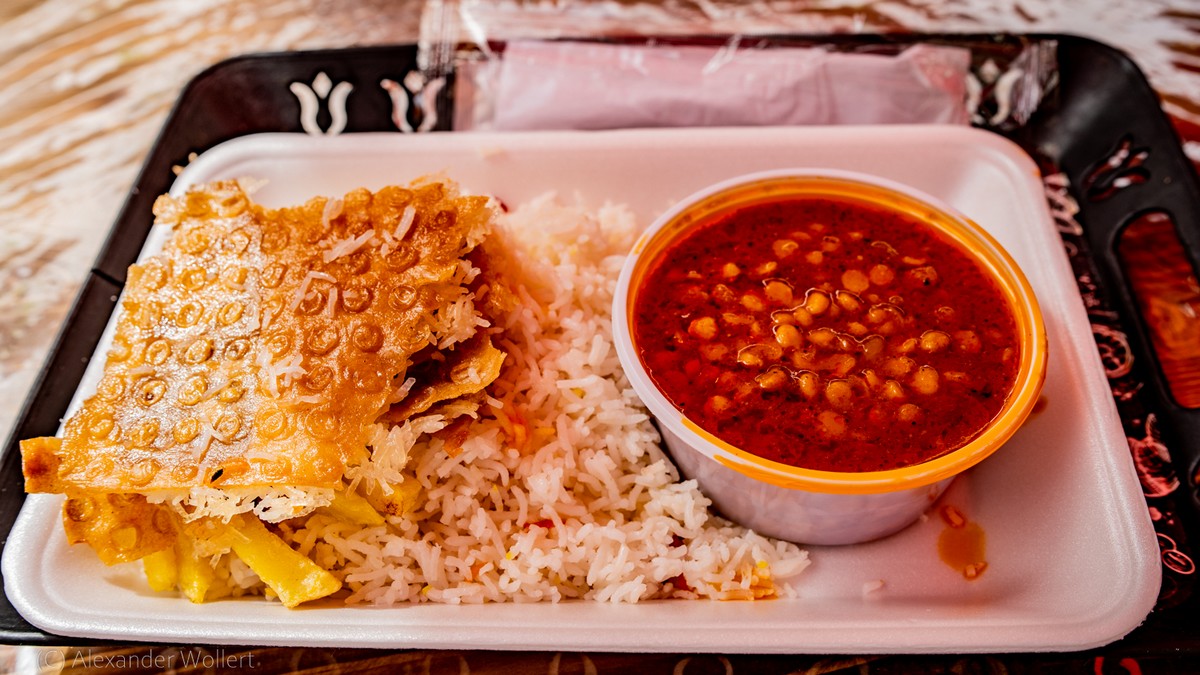
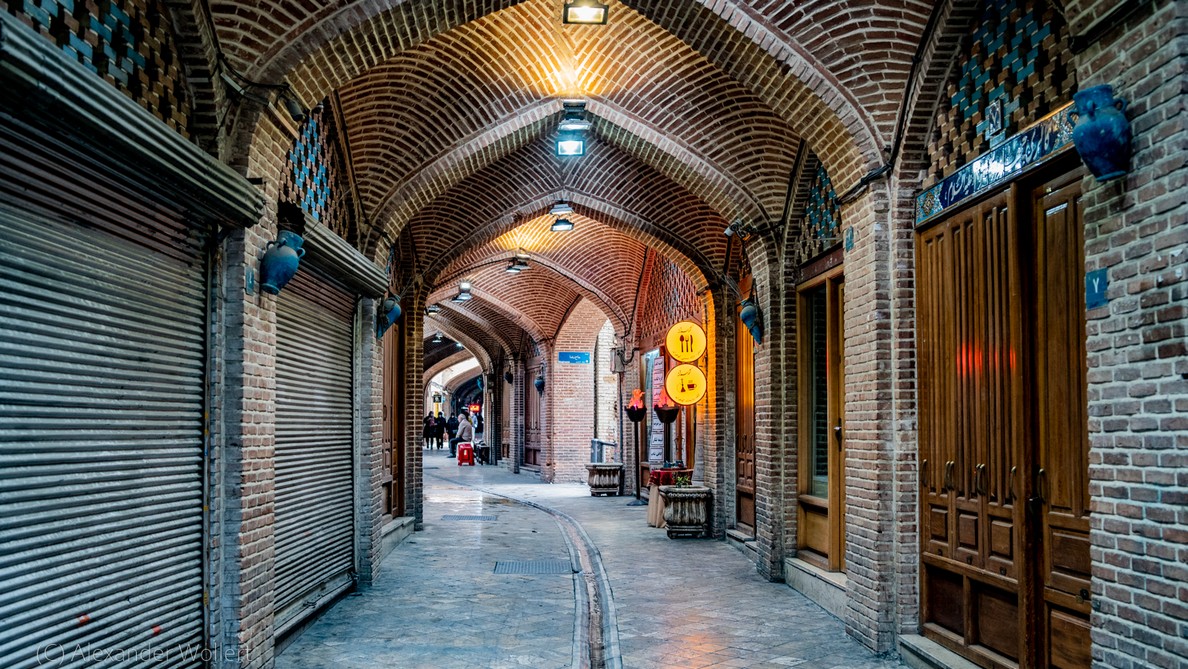
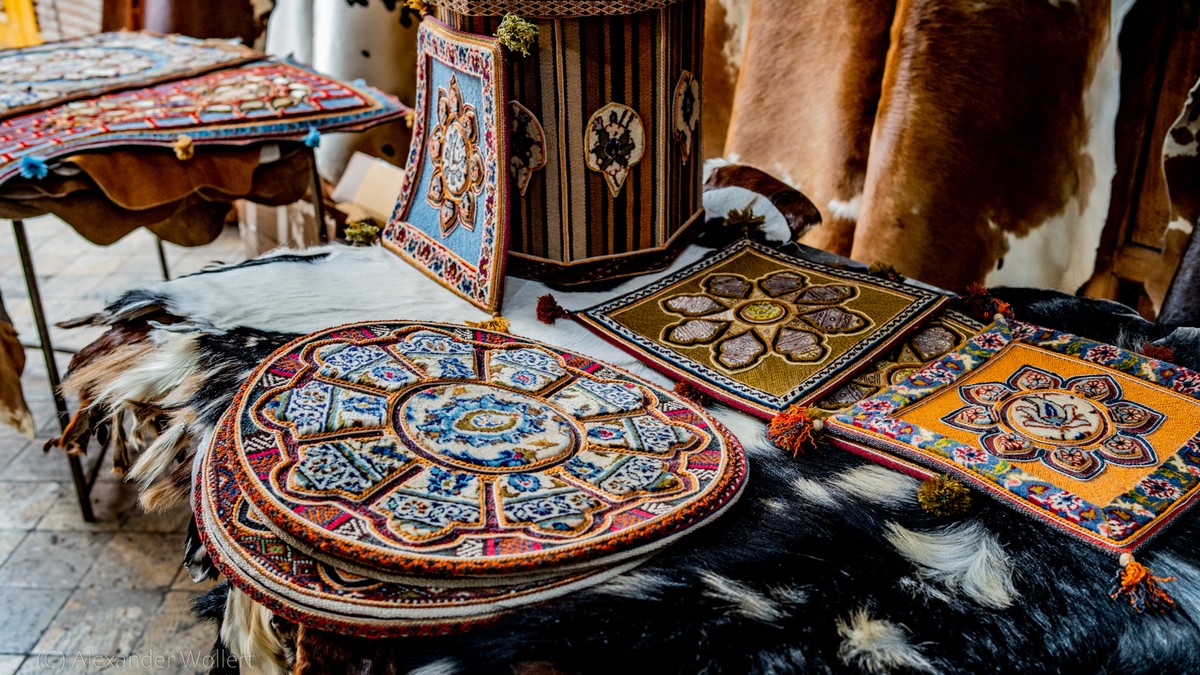
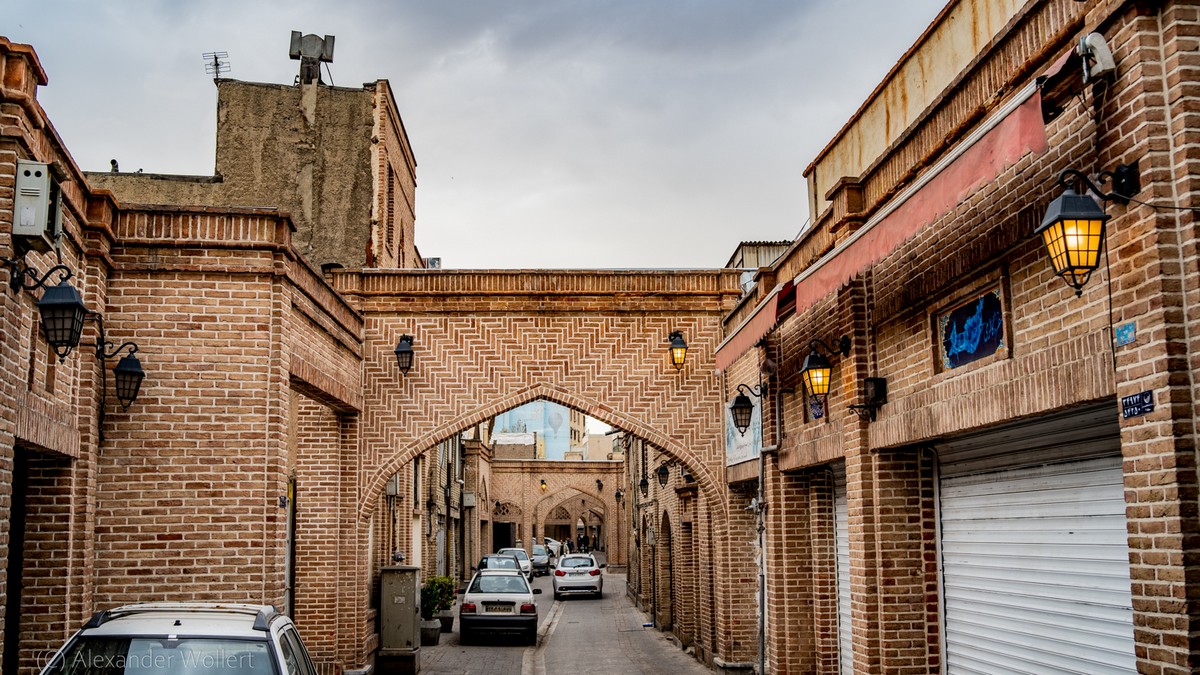
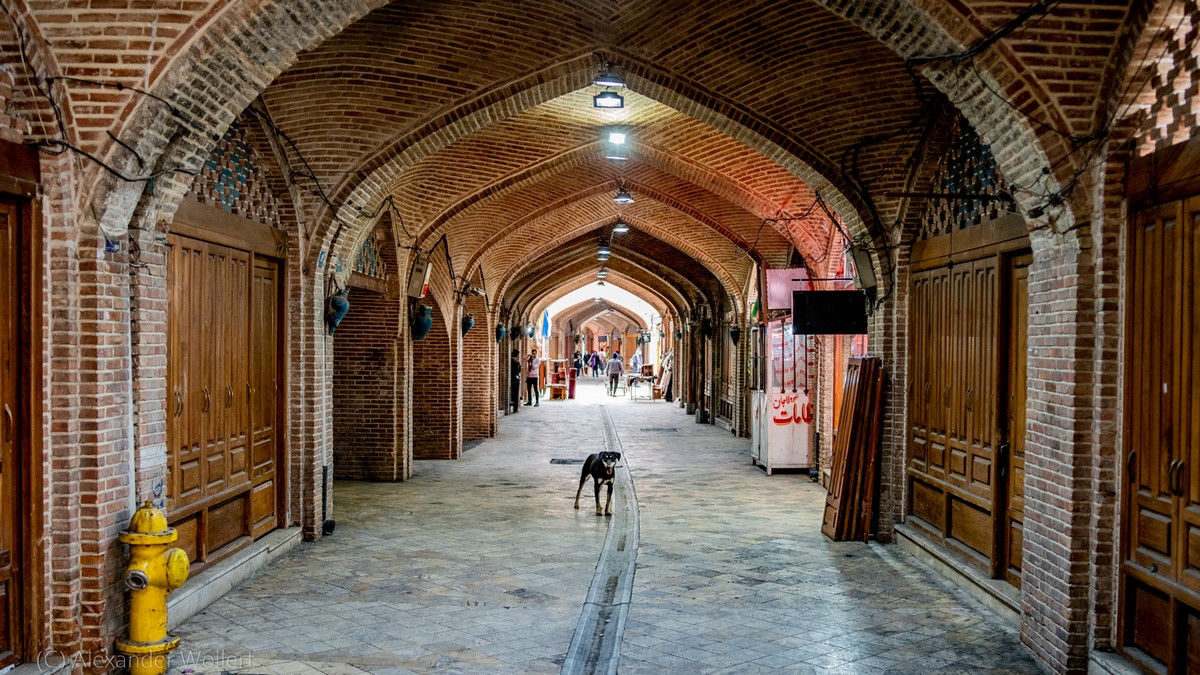





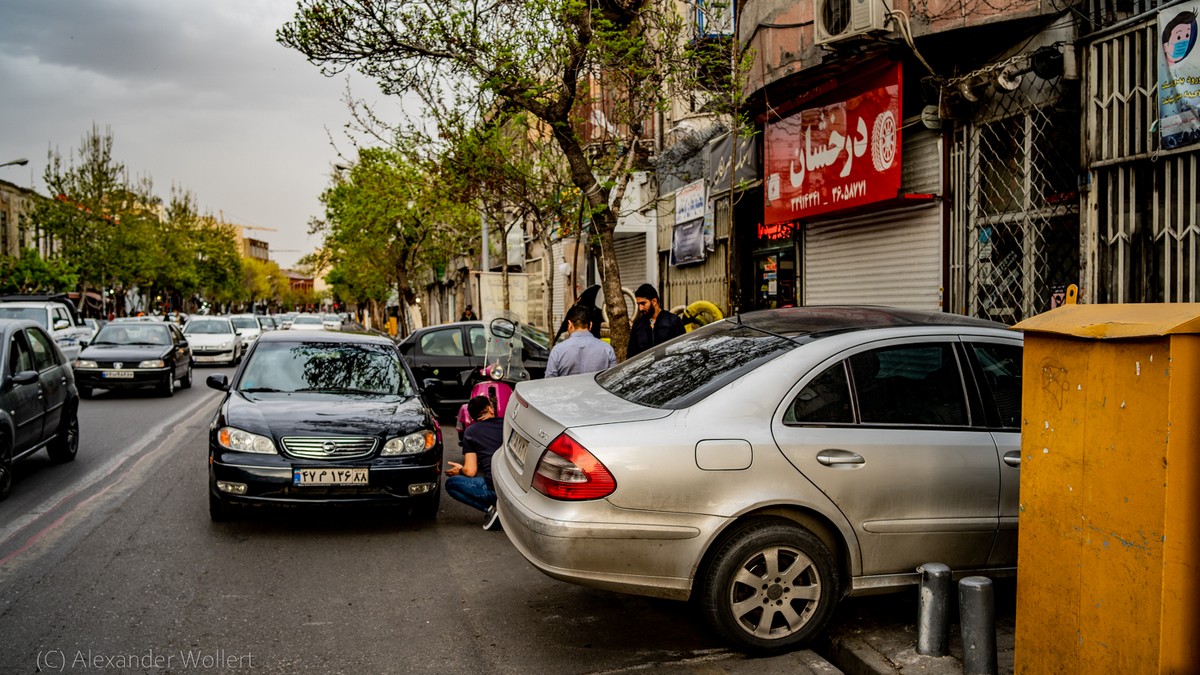

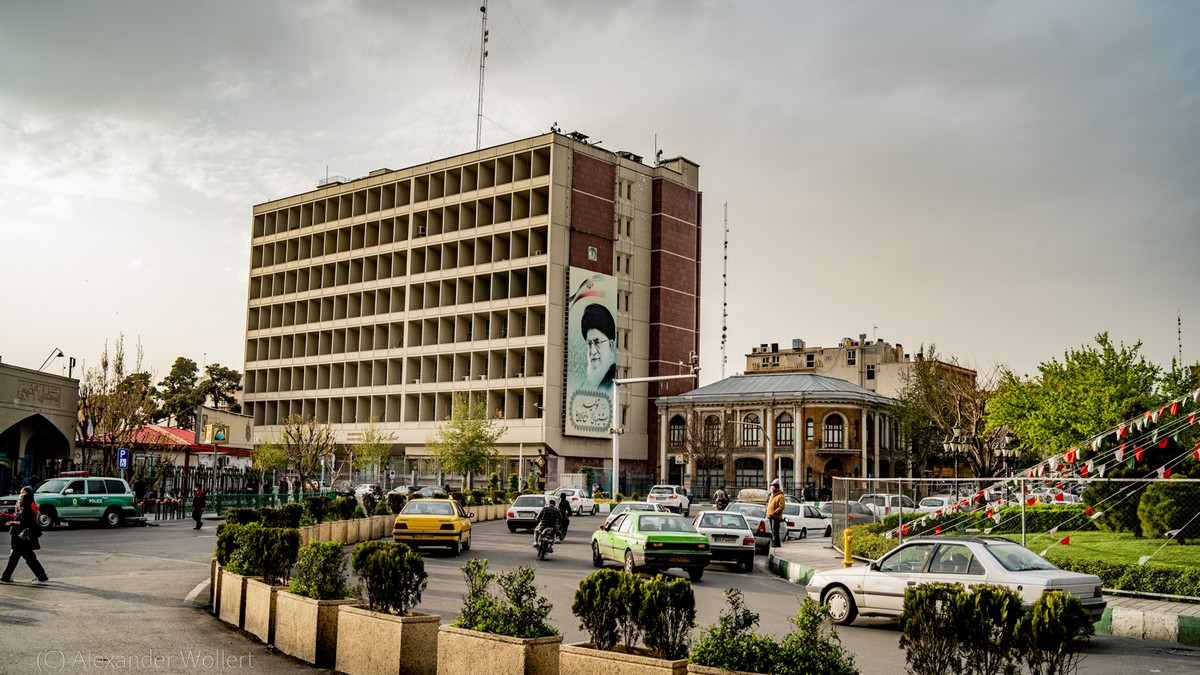
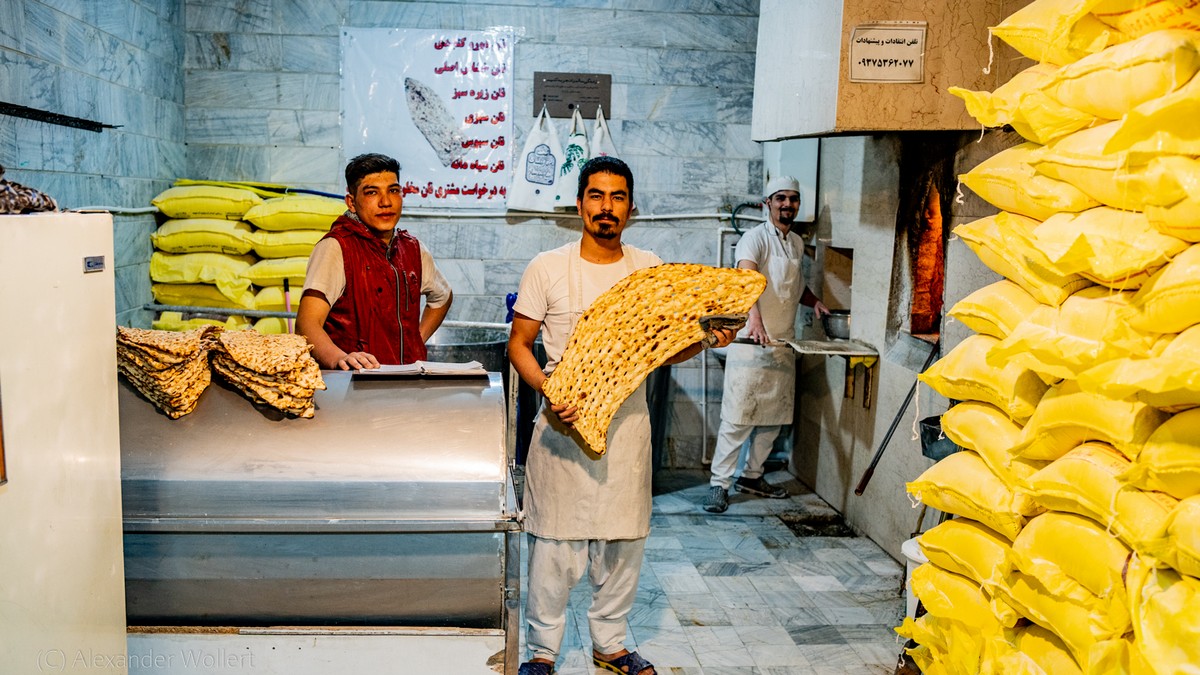


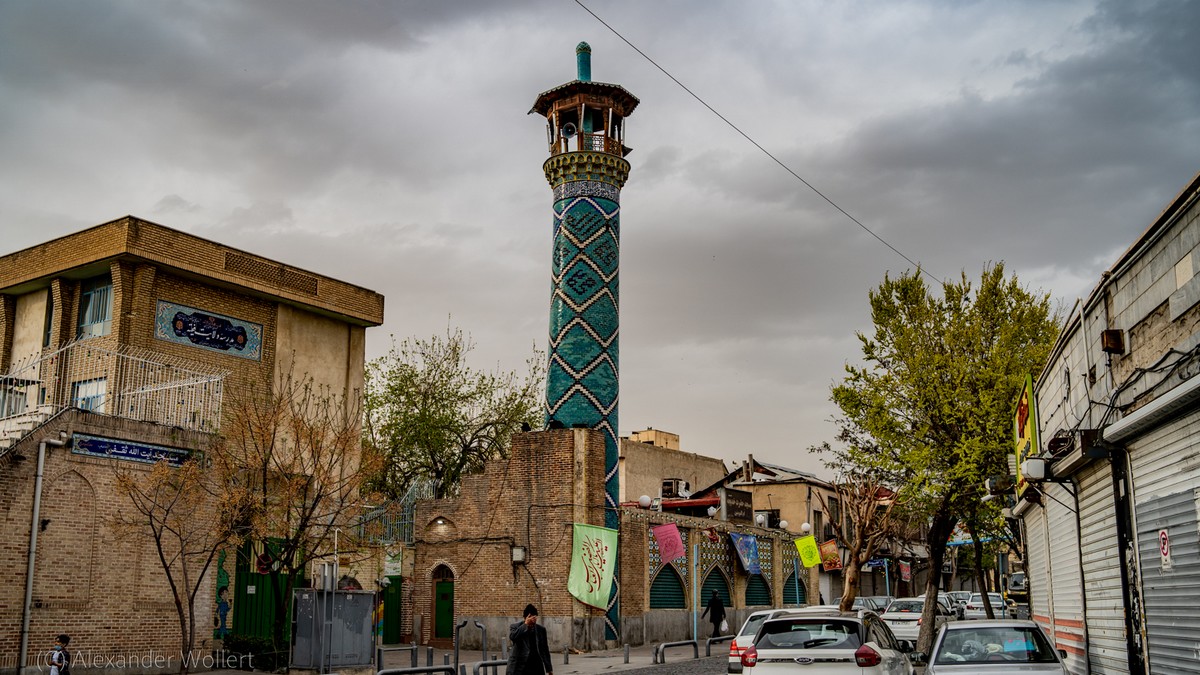
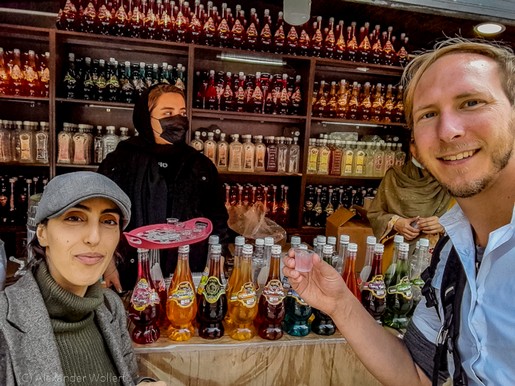


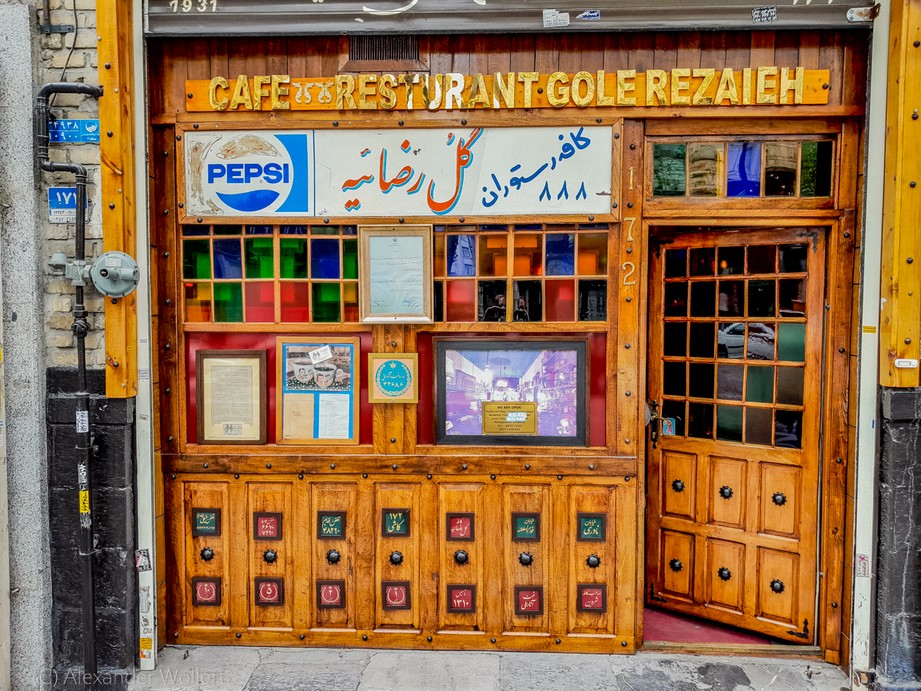
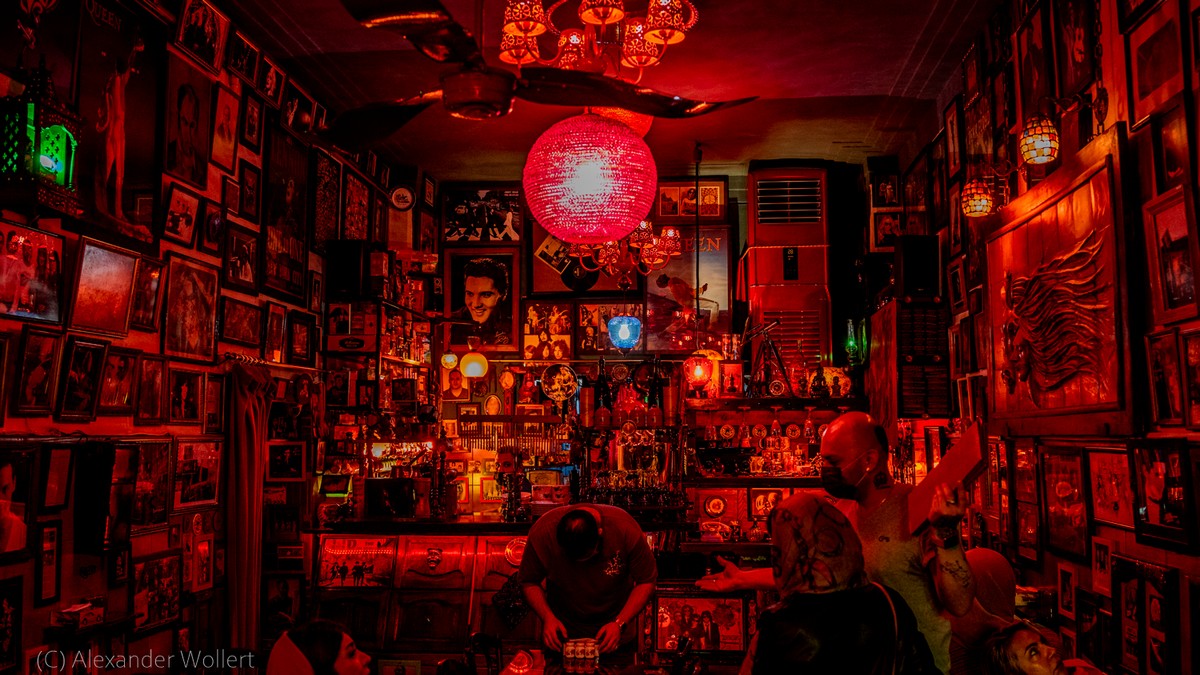
Neda takes the time to show me around the city. For this we take the metro to Ferdosi Square to walk through the district of the same name. We come through the long Lalehzaar Street, which used to house cinemas, dance clubs and other entertainment venues. The old cinema still exists, but it’s closed, apparently since shortly after the revolution.
We roam through the great bazaar of Tehran, which, however, is dead. Not a shop is open. Everyone is probably enjoying the New Year’s holiday and is probably having a picnic with the whole family on a tiny patch of greenery.
Opposite the Museum of Glass and Ceramics, which didn’t quite arouse my full enthusiasm, there is an unassuming entrance into which Neda pulls me.
Behind it is a rock bar. The walls are decorated with photos of Mick Jagger, Elvis and Frank Zappa and Aerosmith’s music blares out of the speakers. Another world, I think at first. Because then you notice that the women are still wearing a headscarf and no one is tapping beer at the bar, but rather making tea.
The roads are not very busy by Tehran’s standards. Nevertheless, the smog scratches your throat. In front of us, people are repairing cars in the middle of the street. Not having space for a garage doesn’t stop people from starting a workshop.




An unexpected challenge is to get fresh money during the holidays. I don’t remember having this problem four years ago. In Iran you can write off your own credit card. As a result of the sanctions, the country is excluded from the VISA and MasterCard program. So you have to bring enough cash with you. I thought of that. What I didn’t think of is that the banks and exchange offices that exchange euros for Toman are closed today because the owners and their families are having a picnic in a patch of greenery.
Even if the prices are low and I can eat for little money or take a snap cab around the whole city, the money is slowly running out of my hands. That’s where Paymen, Neda’s friend, comes in. He gives me a card to one of his accounts. I give him the money in euros and he transfers the equivalent amount to the account. He no longer needs it and leaves his account to me. Unbelievable – again.
TEHRan’s Metro
The fastest and cheapest way to get from one place to another in the huge city is the metro. The labels on the timetables are in Farsi and English, so that I too can find my way around.
The stations and trains are surprisingly modern. And a lot cleaner than in Berlin, for example.
Motifs from the times of old Persia adorn the stations. There is a slight smell of burnt rubber, but ventilation is good. Only posters reminding us of the headscarf requirement for women are disturbing.
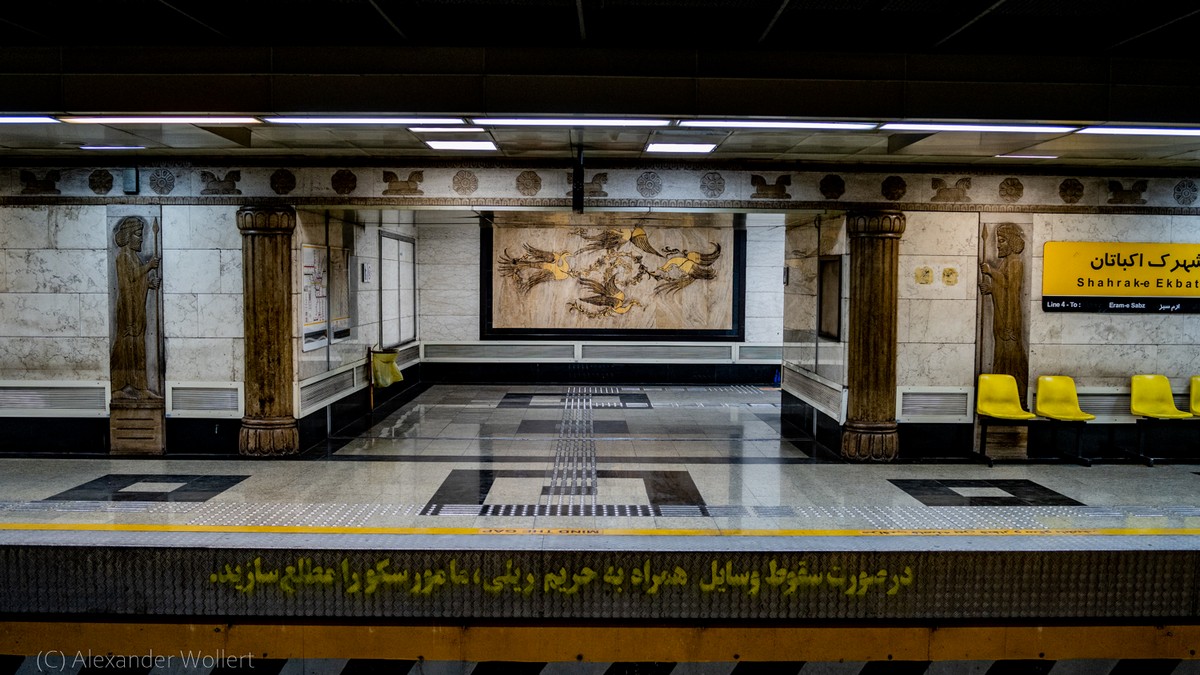
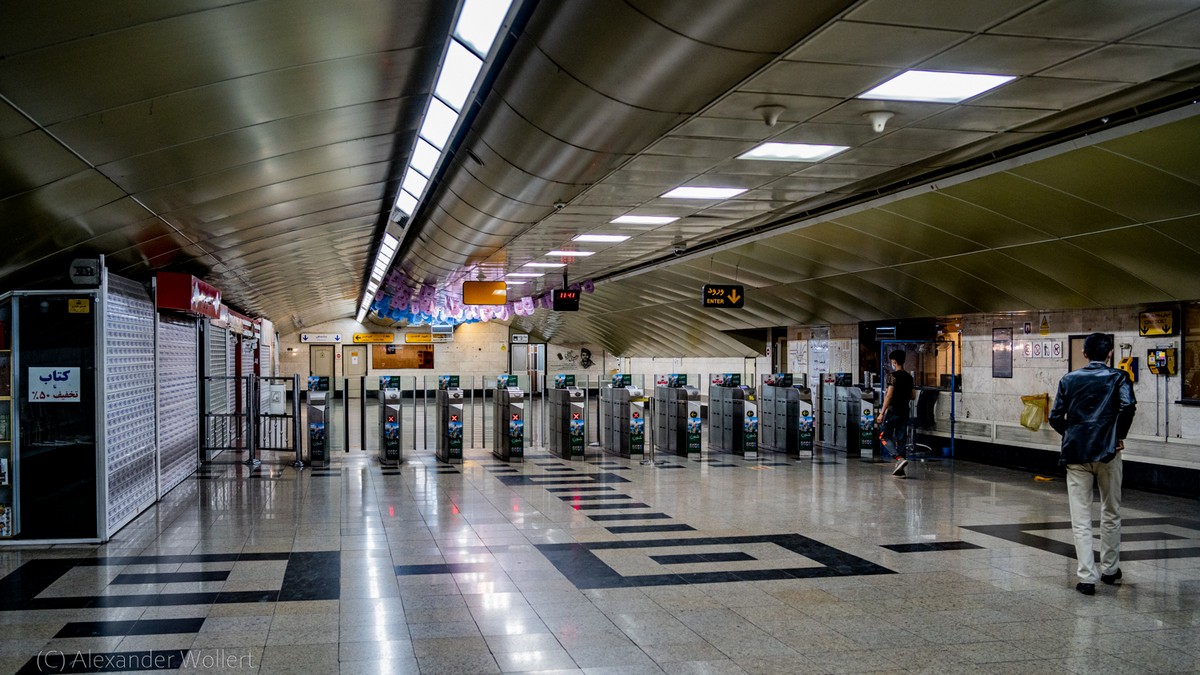
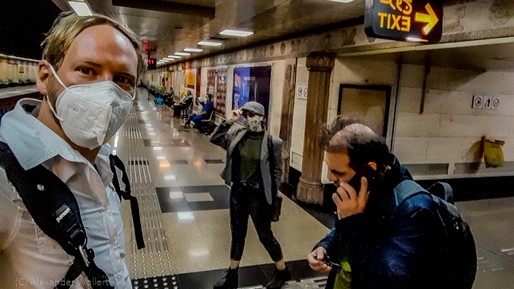

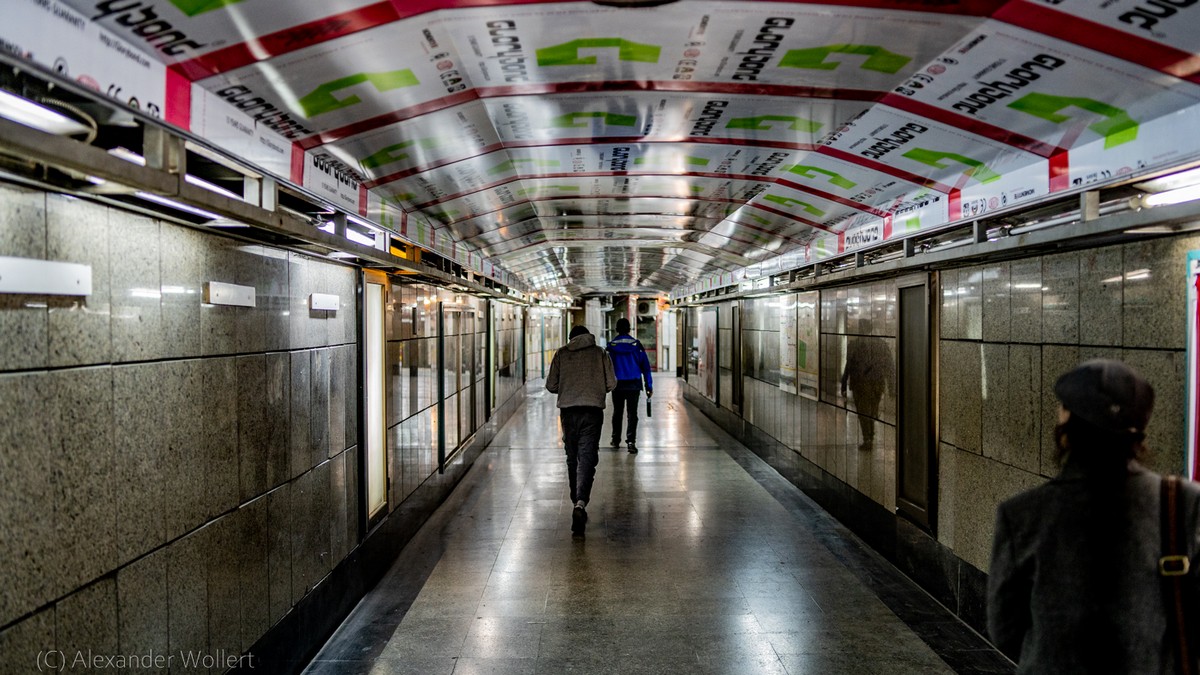
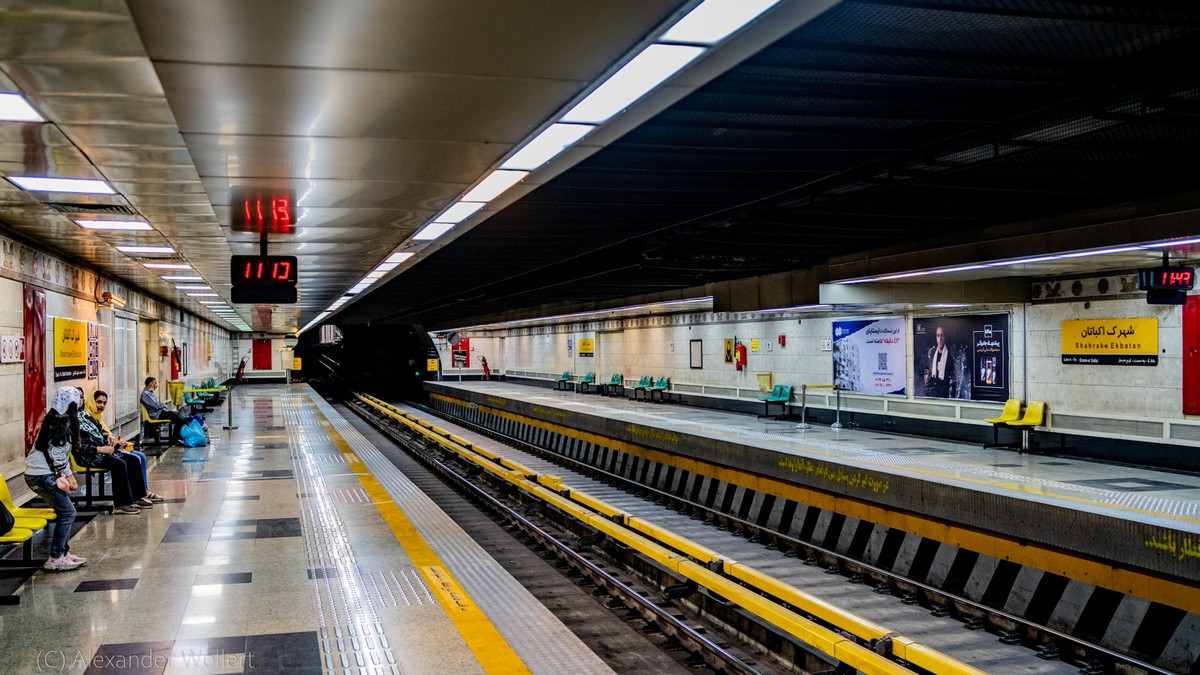
Persian Street Art

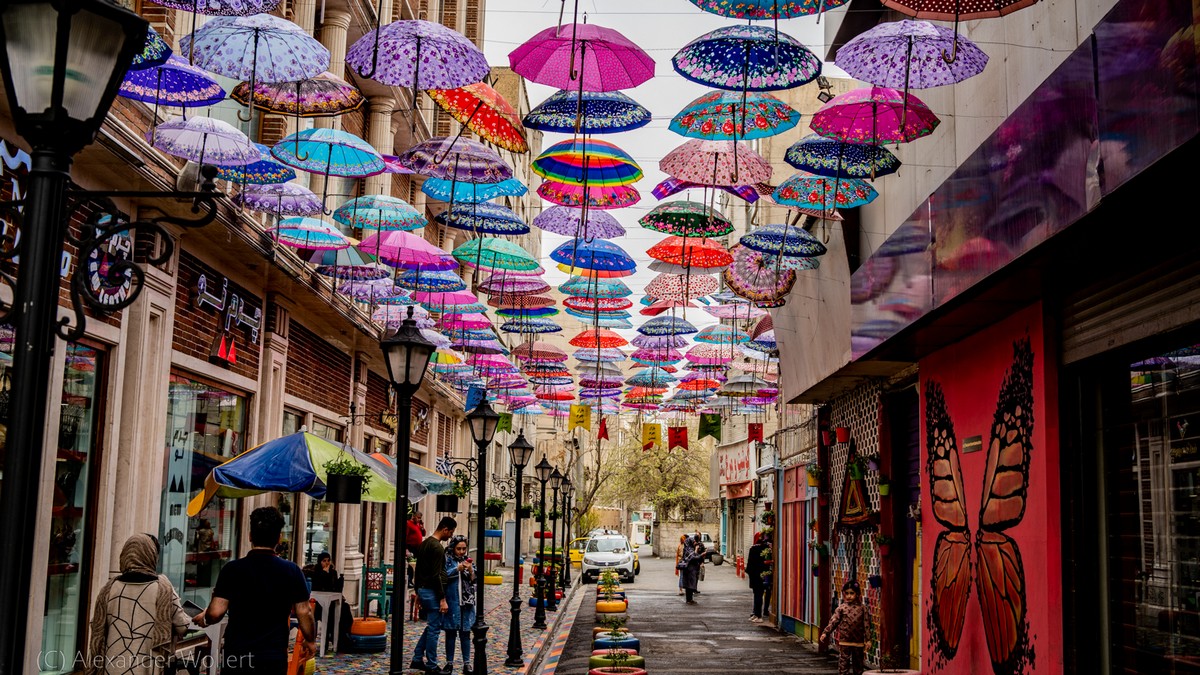
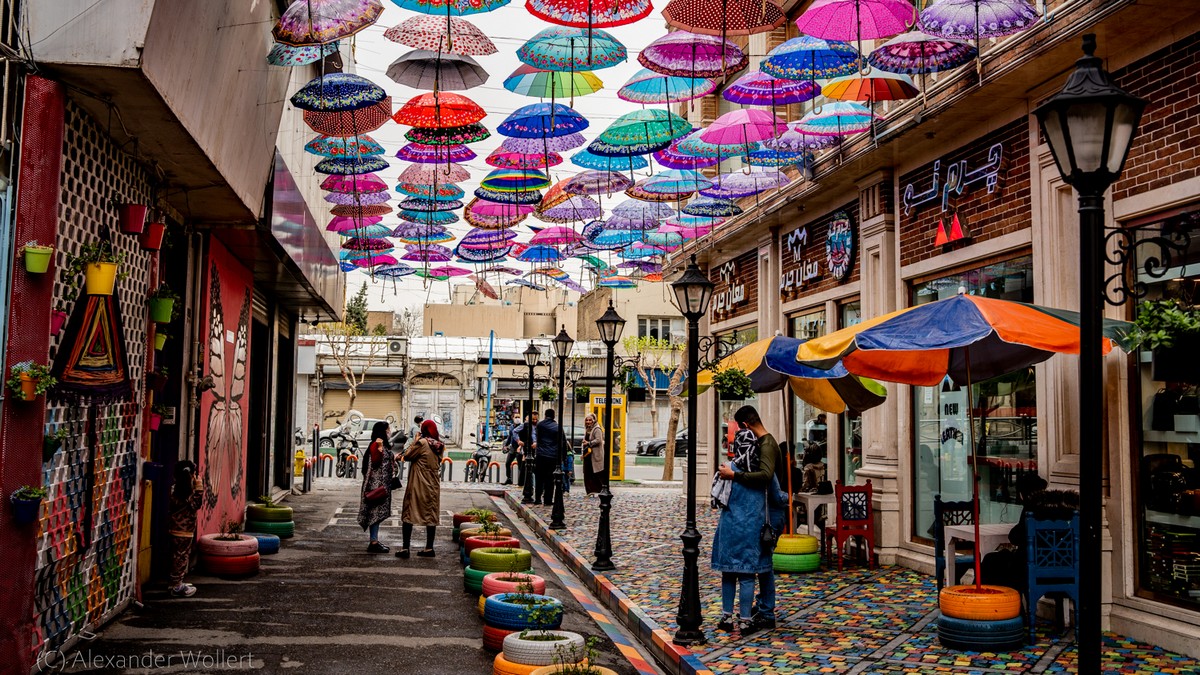
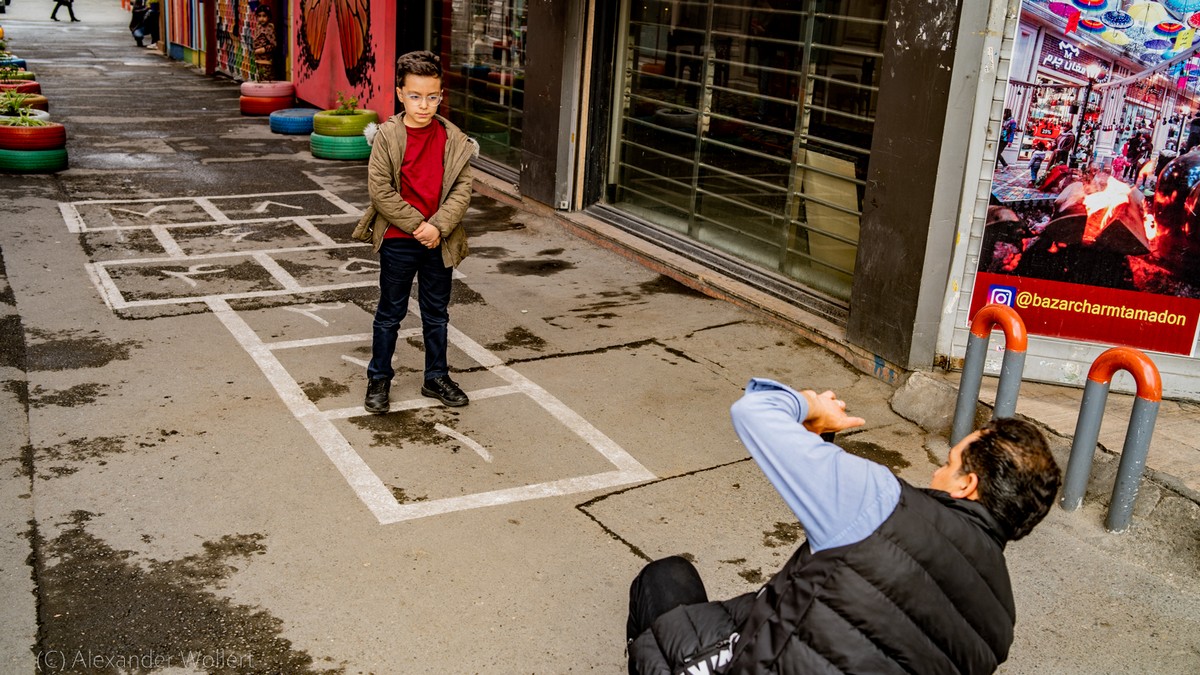
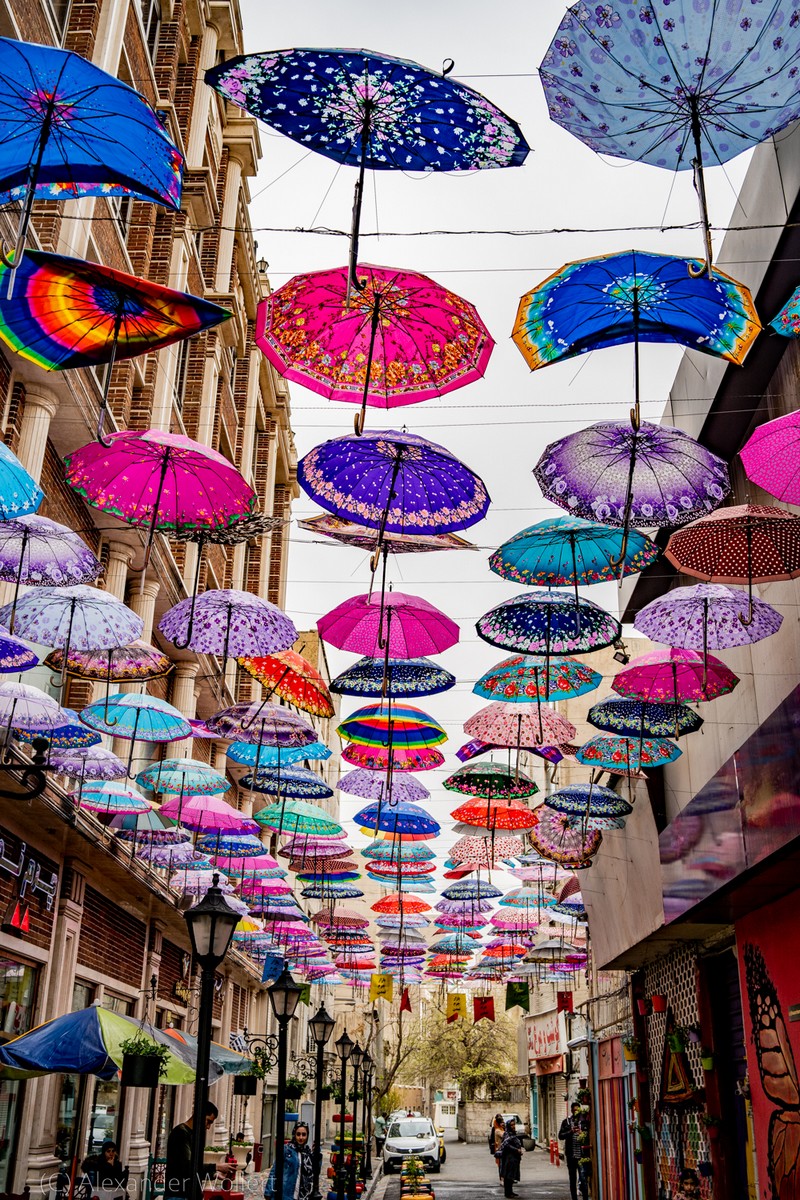
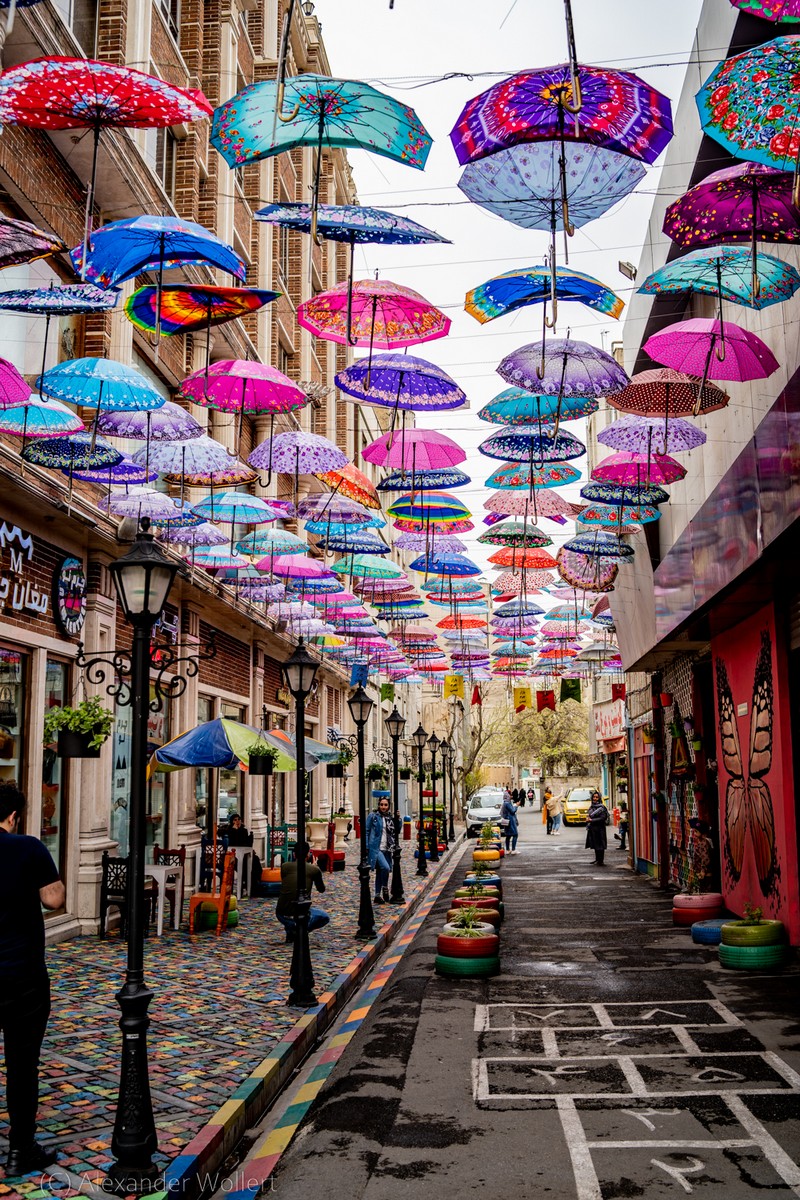
We continue strolling through the Ferdosi district and I see many beautiful corners, streets and pictures. In a small market street of bazar bharm tamadon, colorful umbrellas were hung and even the paving stones were painted. A welcome motif, not only for photo-addicted Iranians.
Unexpected ancient scenes of armies and battles are found along a main street. Beneath it, barely decipherable, is written a poem by Molana, a poet buried in present-day Turkey.
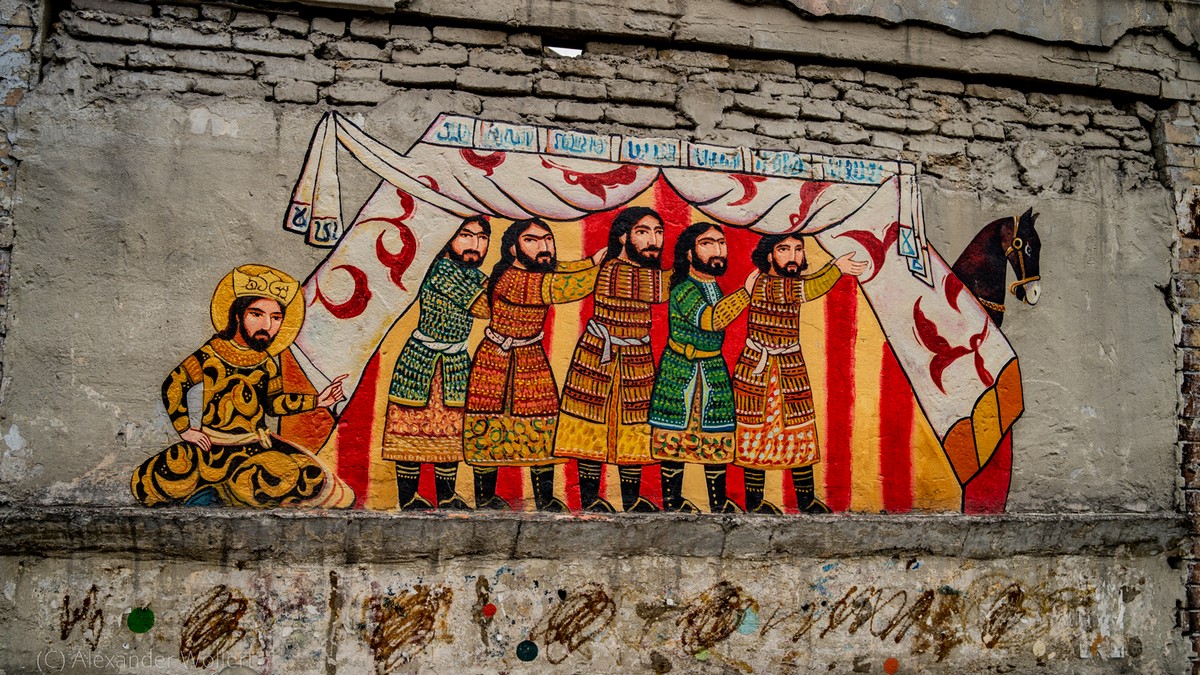
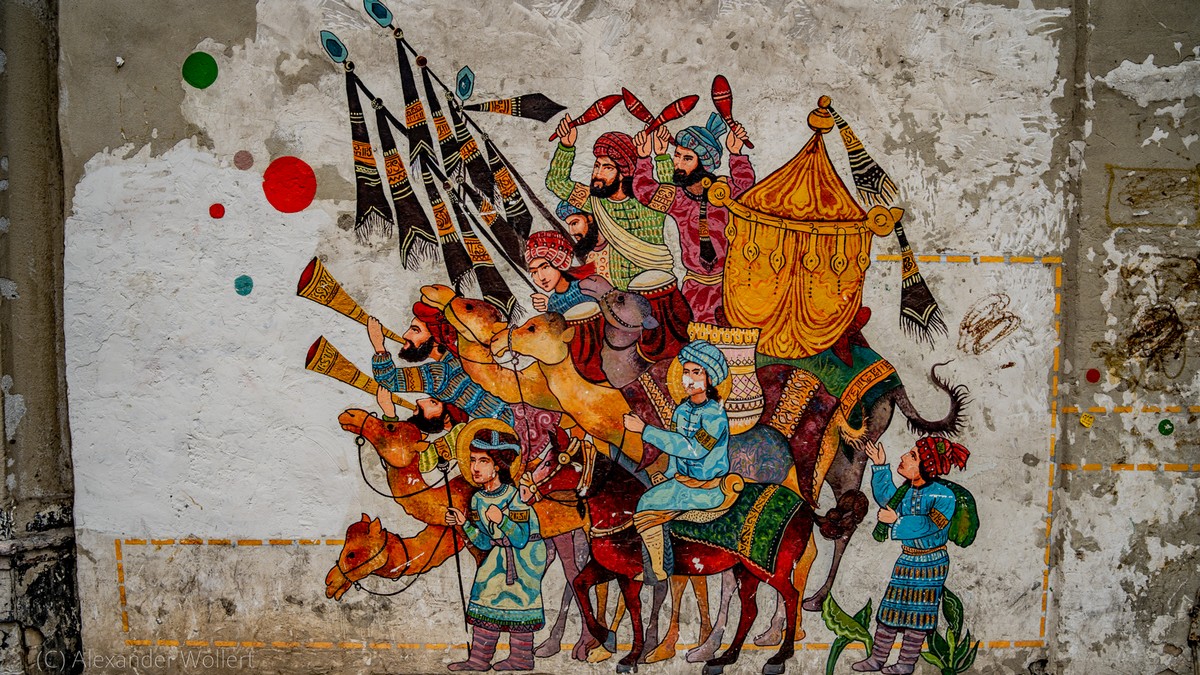

The Beauty of the City Life
I had no big ideas about the city and no wish list. I could already see the Milad Tower and the Azadi Gate. The third attraction that I know of that still remains is the Golestan Palace. Through the Ferdosi district, we will roam there in all serenity and enjoy everything we find along the way.
A street festival is held in the street of 30th Tir. There is plenty to eat and small artists perform. I attract a lot of attention and many vendors ask me to taste their food without expecting me to buy anything. They are happy that I tell them that it is delicious.
Neda and I eat something and drink tea. Next to us is a museum district and Shar Park.
Welcomed by the Museum Quarter and through the incredibly beautiful gate of the National Garden. Behind it are one palace after another, housing the Iranian National Museum, the Iran Ebrat Museum, the National Library and the Ministry of Foreign Affairs.
At the end, the Bagh-e Melli is waiting for us, the University of the Arts. Your architectural style already looks European.
A few streets further we come to the Golestan Palace, which you don’t really see from the outside – apart from the long queue of visitors.
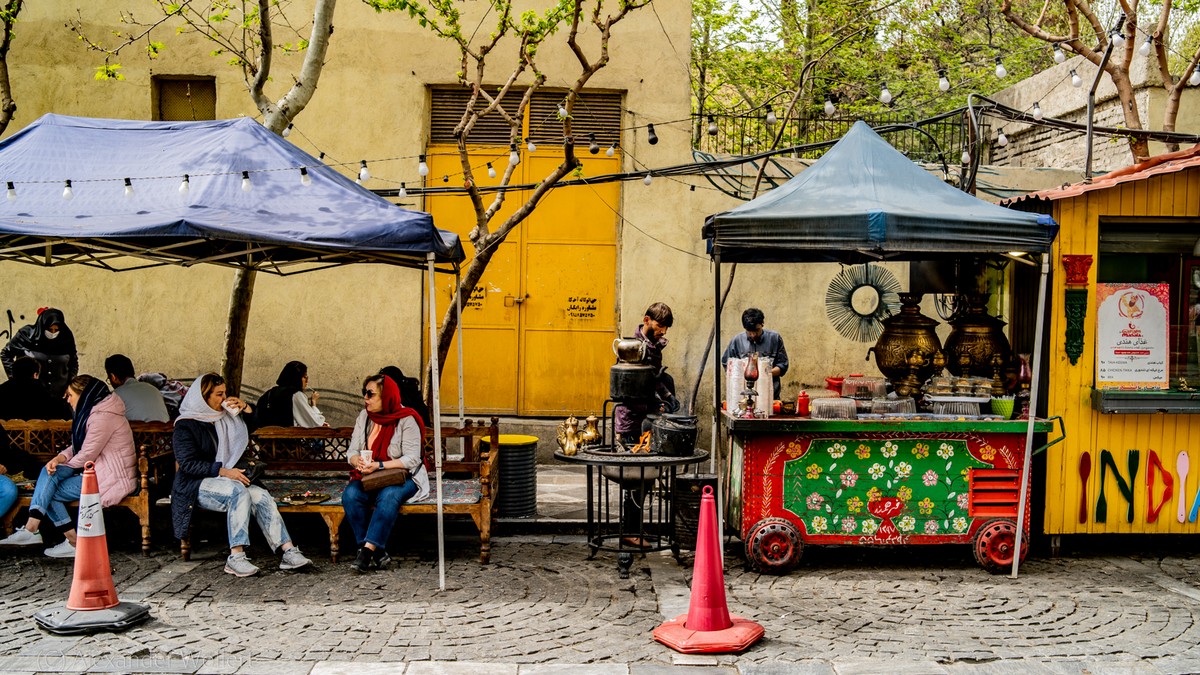
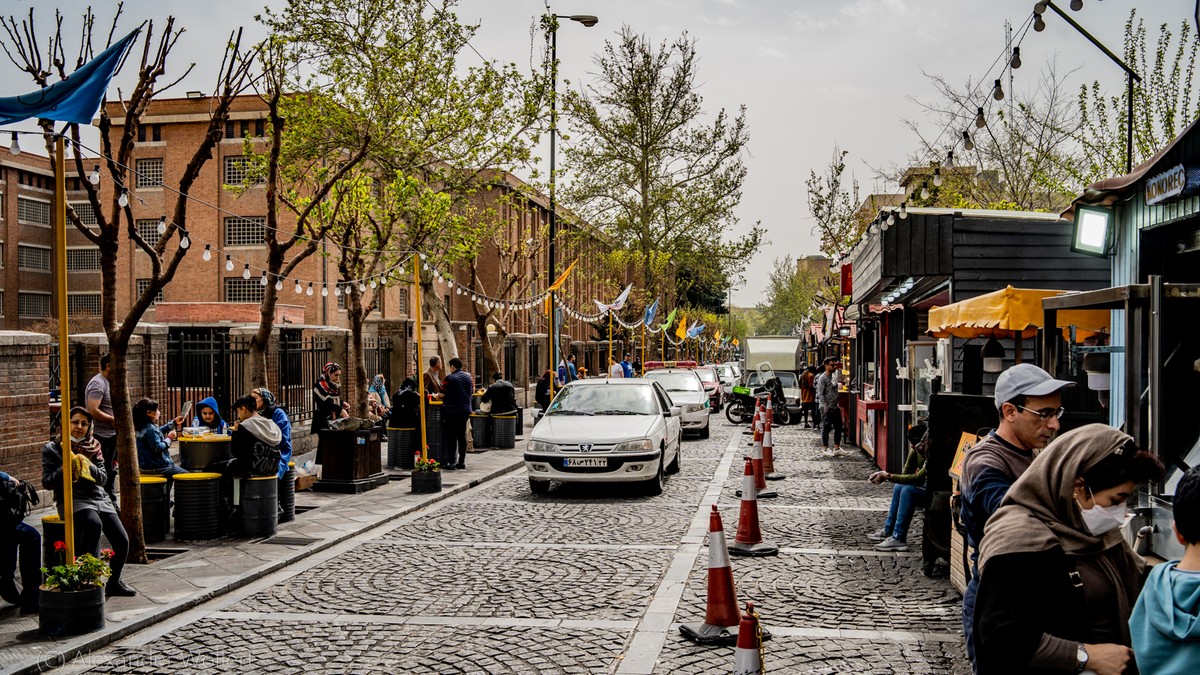
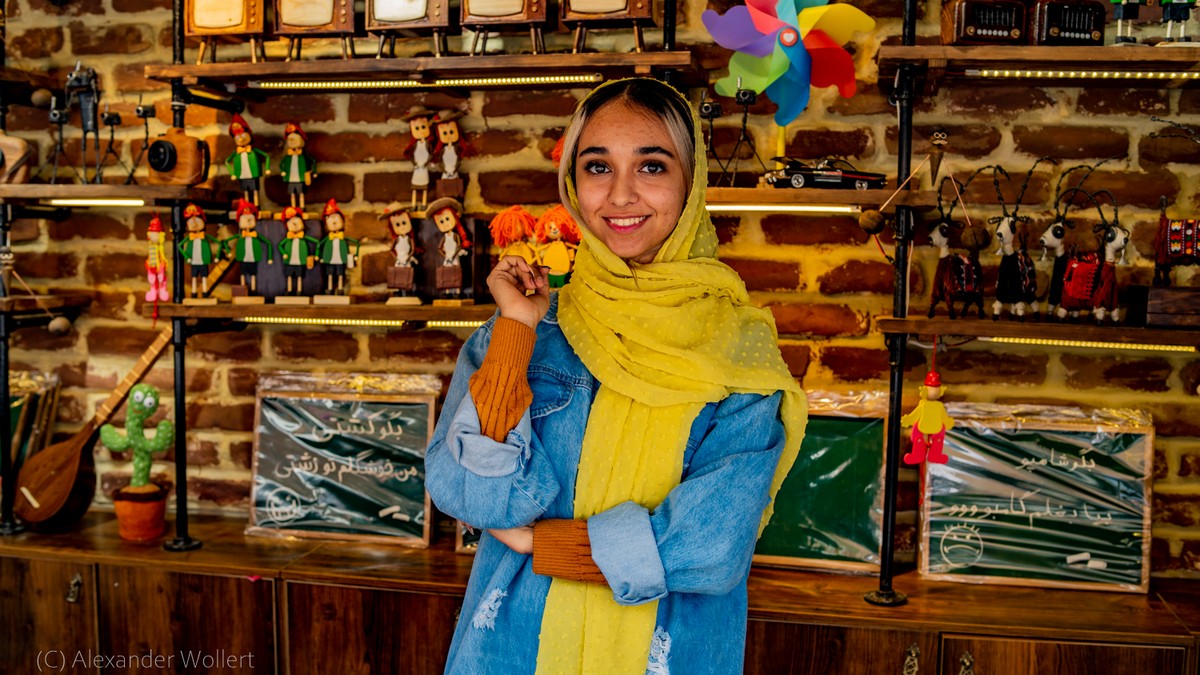
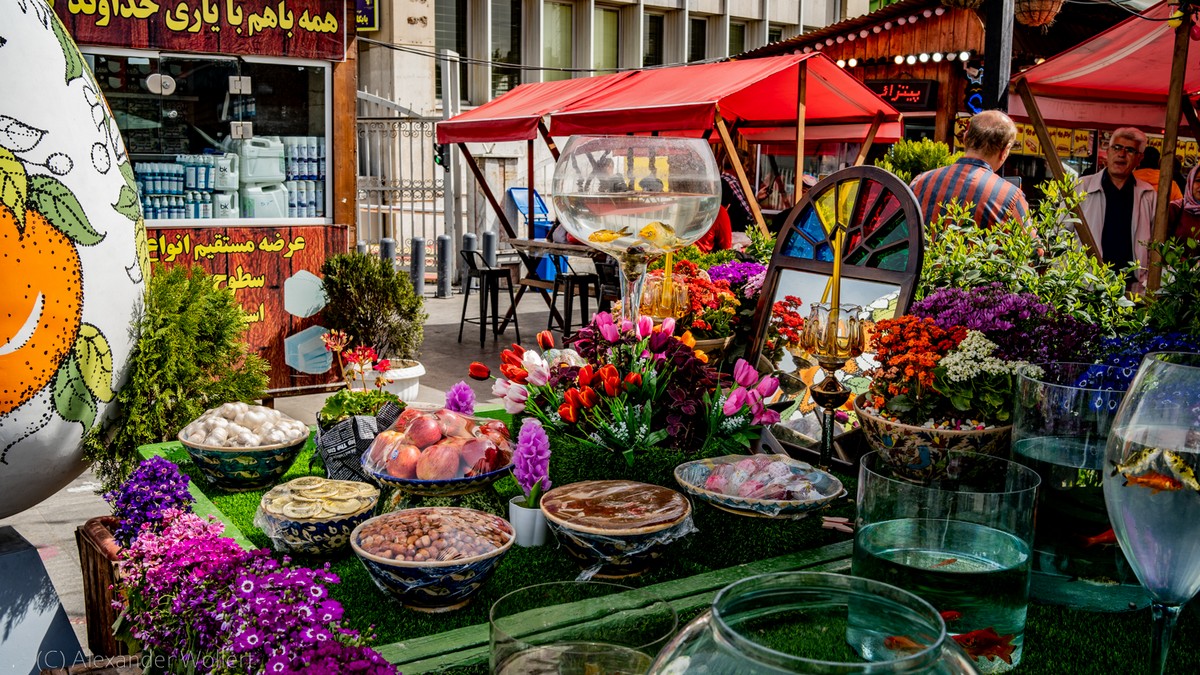

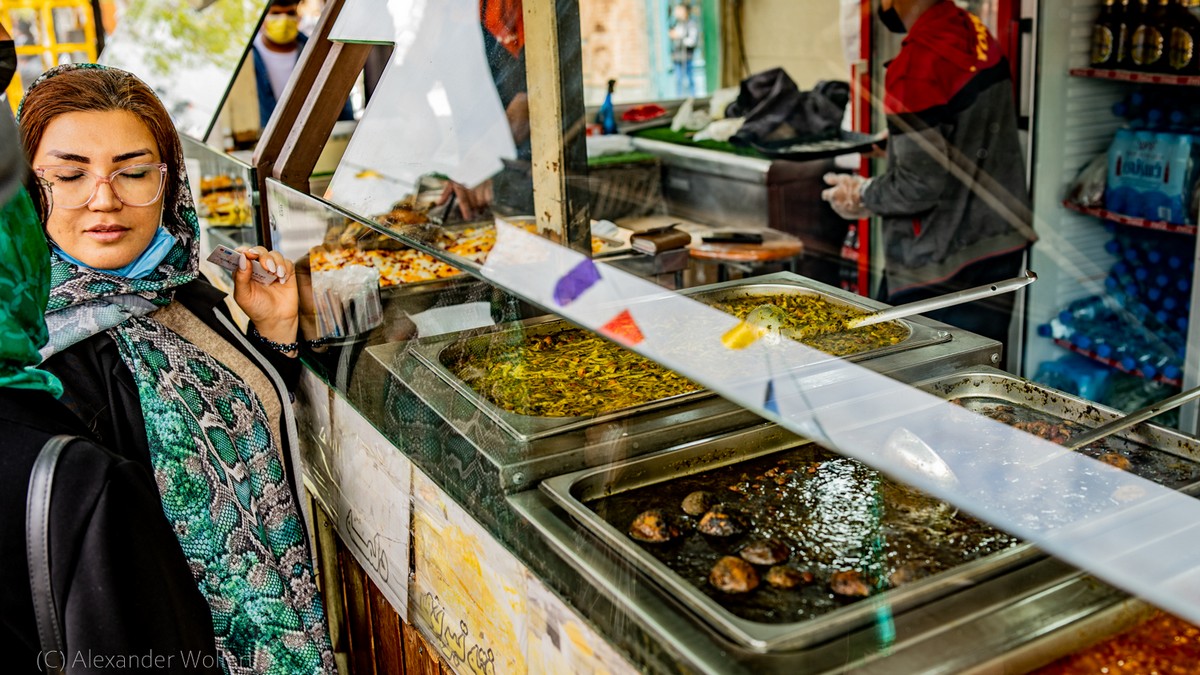
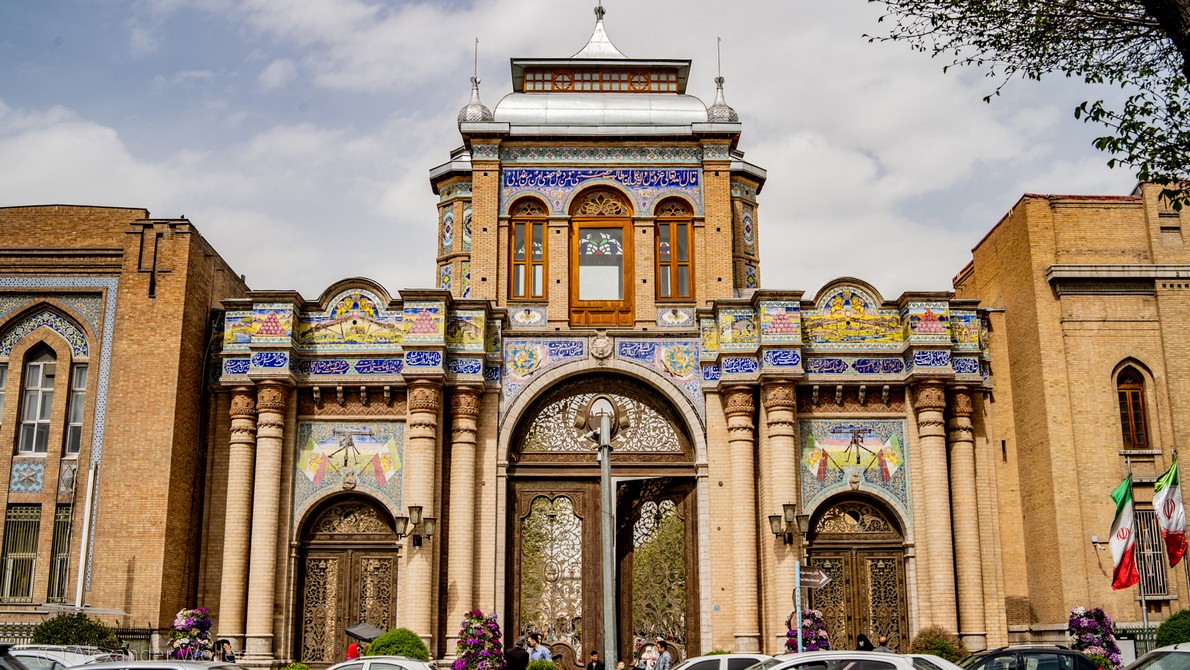
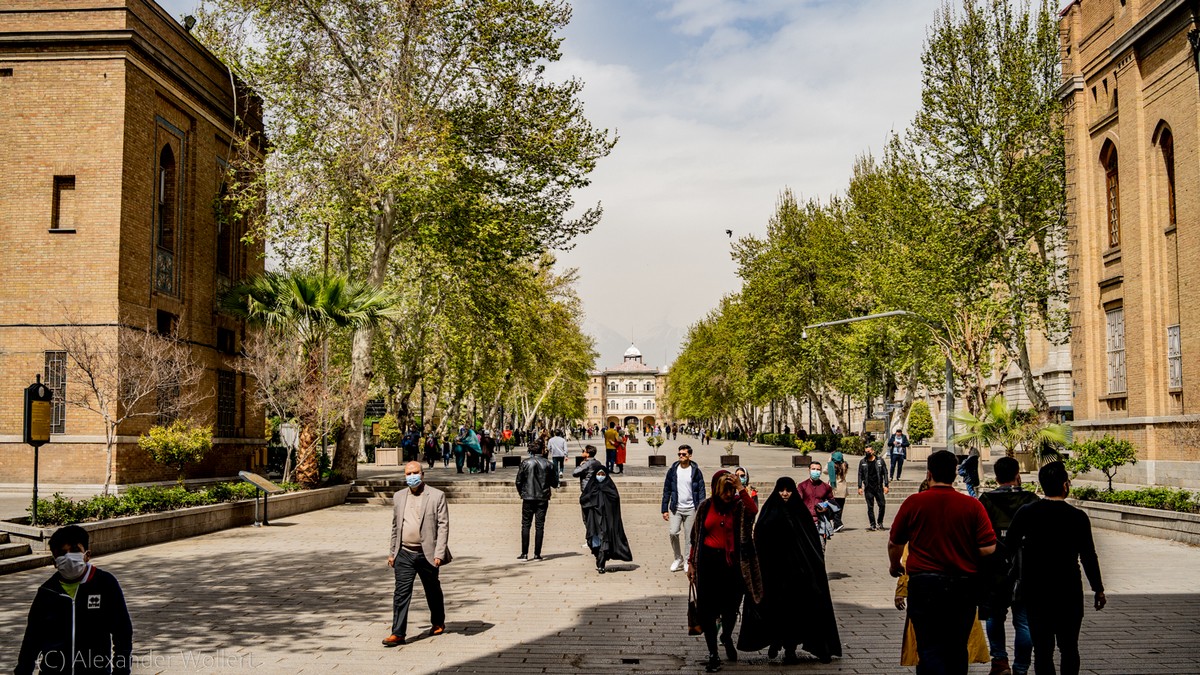
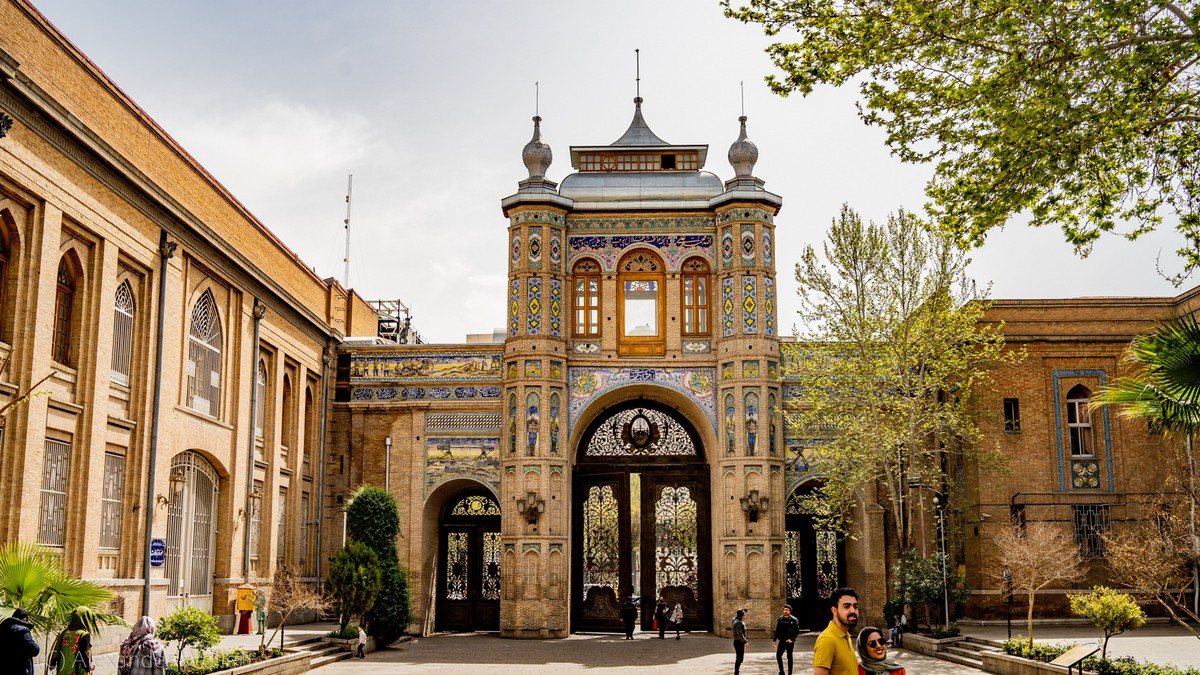
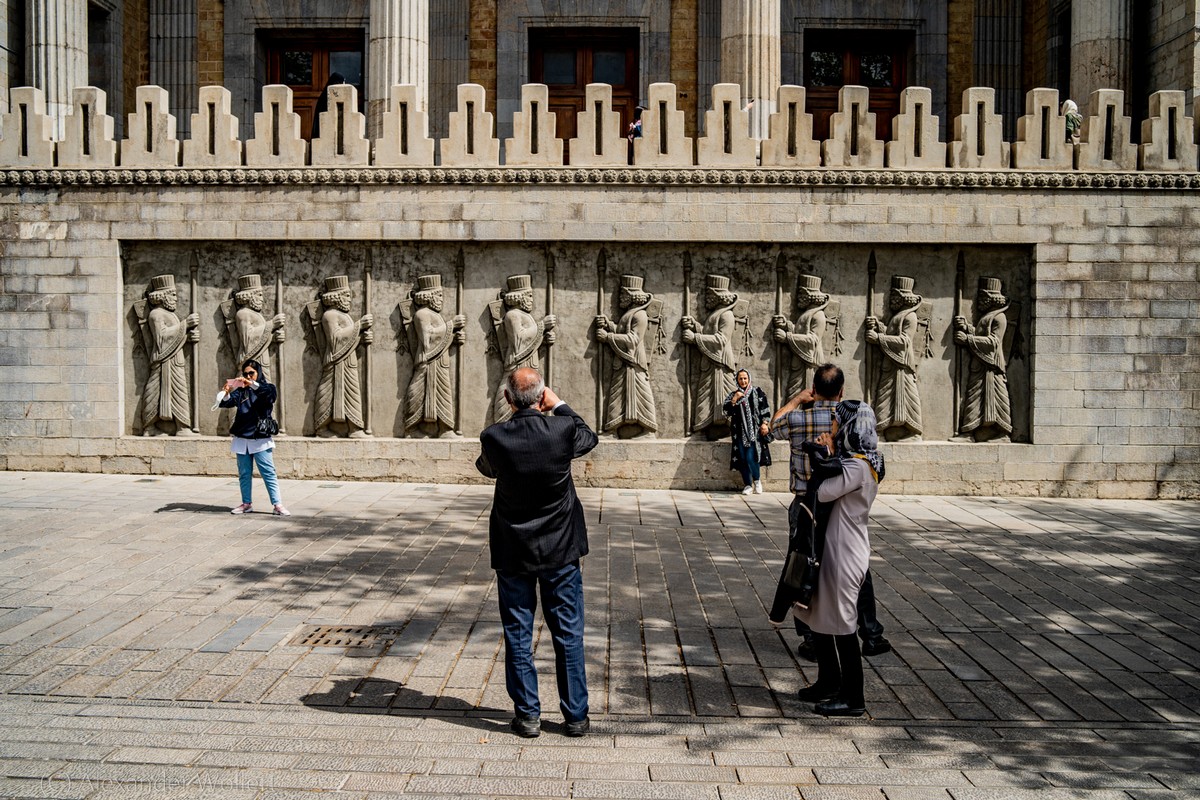
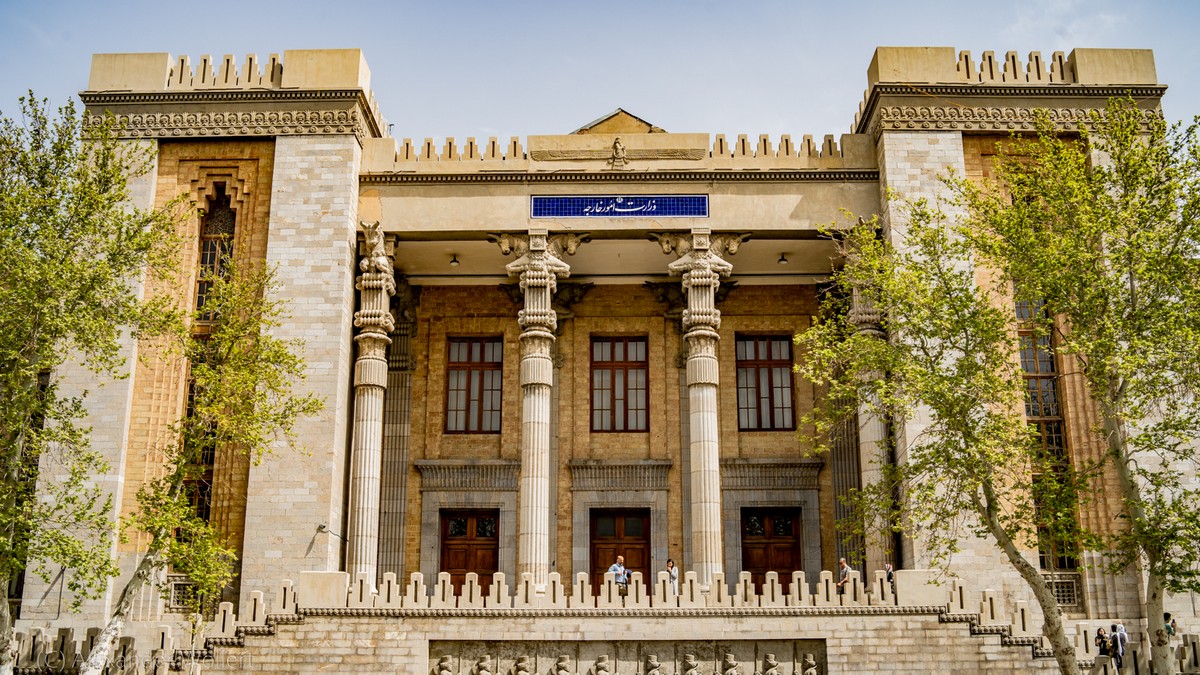
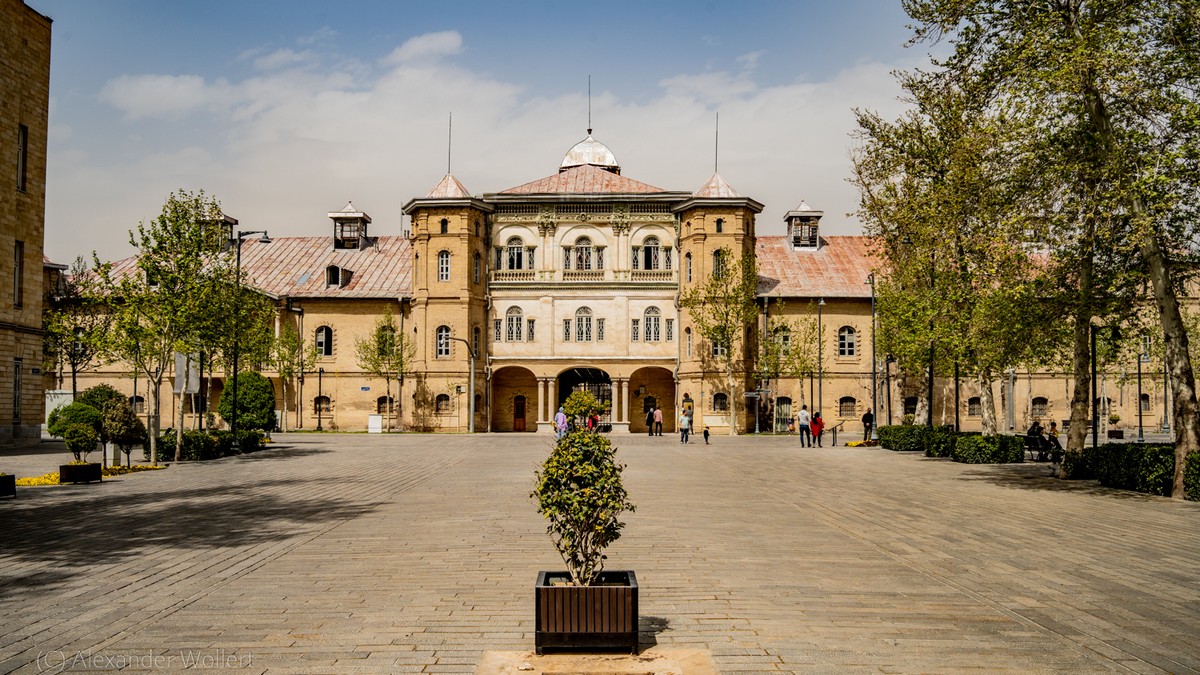
The Golestan Palace
Where is the entrance to Golestan Palace? Oh, there where the long, long line is. Visiting the Royal Palace on Noruz is apparently not the most creative idea. Neda and I need a long time to understand the system for buying tickets. You have to pay the basic entrance fee once and then you have to put money down again for each attraction within the palace. For the Porcelain Collection, the Royal Apartments, the Throne Room, the Hall of Mirrors…everything wants an additional entrance fee and for foreigners, the fees are five times as expensive. I understand that the locals don’t have much money and shouldn’t bleed for their own cultural assets, but that’s not hospitable. Especially since there aren’t that many foreign visitors to justify the hassle.
The palace is not very old. It was built between the 18th and 19th centuries and has served the Shahs as their residence and seat of government ever since. Reza Pahlavi was the last monarch there until he fled in the course of the Islamic revolution.
After the Revolutionary Guards, the palace is now overrun by tourists and Instagram photo motif seekers. And of course the Iranians looking for a small patch of grass to have a picnic.
Selfies in front of the beautifully painted walls are a must. The king’s hall is overflowing. To protect the carpets, visitors are given plastic covers for their shoes, which causes chaos in front of the covers and a huge mountain of rubbish. The plastic films themselves don’t stick to the shoes and lie around in the aisles as rubbish.
I have an appointment with Romina and her friend Kimia at the entrance to the Tarjish Bazar. The two lead me through another part in the west of the city.
In the bazaar, the girls encourage people to try this and that. Be it the salty olives or the sour fruit paste lavashak, the girls reach into every basket and hand me something.
The Quarter of Tarjish
Romina is well prepared and has already come up with a plan for her city tour. After the bazaar we visit the Baghefedoz house. Some monarch had this beautiful house with grounds built for his favorite affair, still this facility brings pleasure. Everything is colorfully decorated like for Easter – but it’s Noruz.
We drink tea and stroll back through the market to come to an imposing religious site: Imamzadeh Saleh.
Like all young and enlightened Iranian women, the two girls have absolutely nothing left for Islam. Still, they want to show me this place. Your headscarf is not enough. At the entrance of Imamzadeh Saleh, the two must obtain and wear chadors. These cloths cover the whole body. Not only is the grave of this Imam Sadeh found here, but also that of a nuclear physicist who died in an American attack. My two hostesses explain to me that there is no need to shed a tear for this man loyal to the government.
They’re not interested in visiting the holy shrine, so I’m going on my own. I leave my shoes at the entrance. Shoes are banned in mosques, but no one has ever said anything against beer-themed socks. I am proud to pay due respect while an imam indoors chants a monotonous chant. When I show the girls the socks I just marched through the holy shrine in, they squeal with delight. I think I’ve done my bit to dishonor a sanctuary again this time.
What do you do when you have too much time? You collect clocks or visit a museum of time that has clocks that someone else collected who had too much time. There is also a lot going on here and we have to queue for a long time.
The house dates back to a bygone era long before our time and just looking at it makes us pass the time. The owner was a wealthy merchant who collected clocks on his travels.
There are grandfather clocks, fireplace clocks, pocket watches, sundials, hourglasses and wall clocks to admire on two floors. For me, however, this museum is relatively boring. The collector mainly collected his watches in baroque France and Germany, so I often saw most of these watches in museums at home in one way or another. Waste of time.
The Chitkar-Lake
I can’t believe my ears when the girls suggest going to a lake. A lake? In Tehran? A trickle of dripping water usually draws crowds of Iranian families out with their picnic blankets and selfie sticks. What does a lake have to do then? I give myself the answer and am confirmed.
The car park by the lake resembles the scrapping site of the German Automobile Industry Association. Cars are lined up to the horizon, most of them ready for the scrap heap. On the shore there is the whole leisure program: carousels, roller coasters, cafés, parks and of course millions of Iranians with their picnic blankets.
However, Romina and Kimia let me know that there are an incredible number of Afghans present and they wonder why. I can give that to you. Unfortunately, the Allies recently fled Afghanistan.
Millions of people fled their homes just as quickly to avoid falling into the hands of the Taliban. Many of these people are staying in neighboring Iran.
Nobody swims, despite the heat. On the one hand, public undressing is of course not welcomed, on the other hand, the lake is also a drinking water basin.
We sit in a café for a while and watch the spectacle. I can impress girls with my vocabulary, especially words that shouldn’t be said in public. They are amazed and have a great time. We exchange perspectives on everyday life until we finally say goodbye and I go my own way again and meet another couch surfer, Parisa, in Laleh Park.
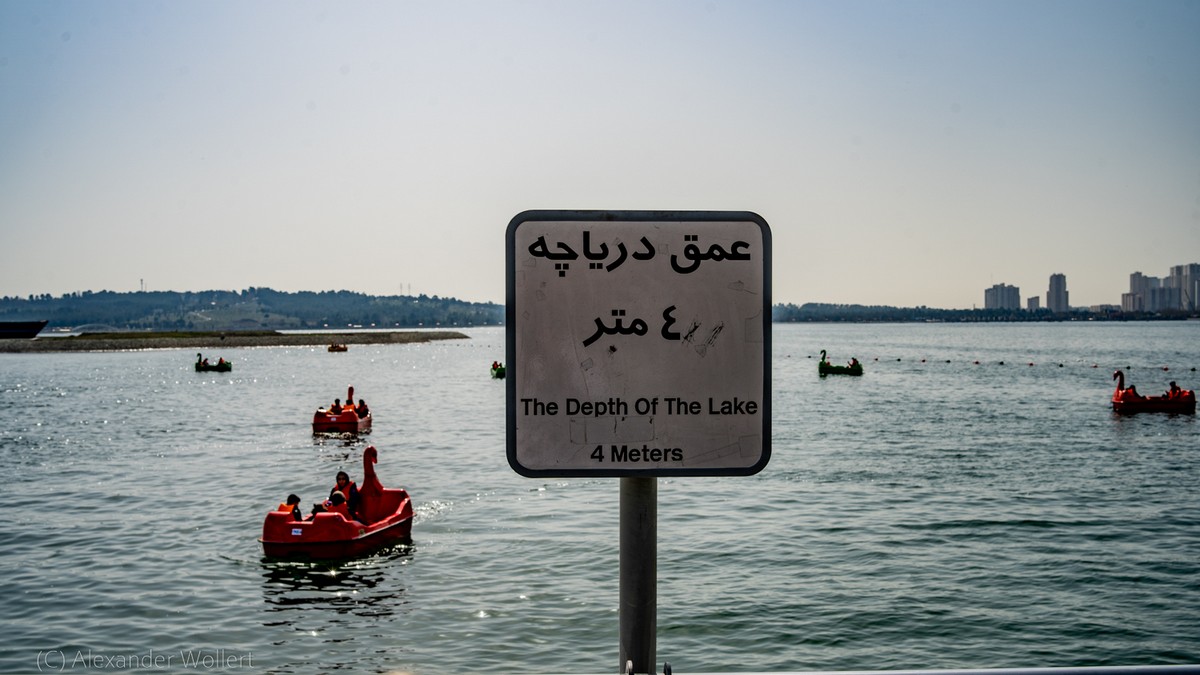
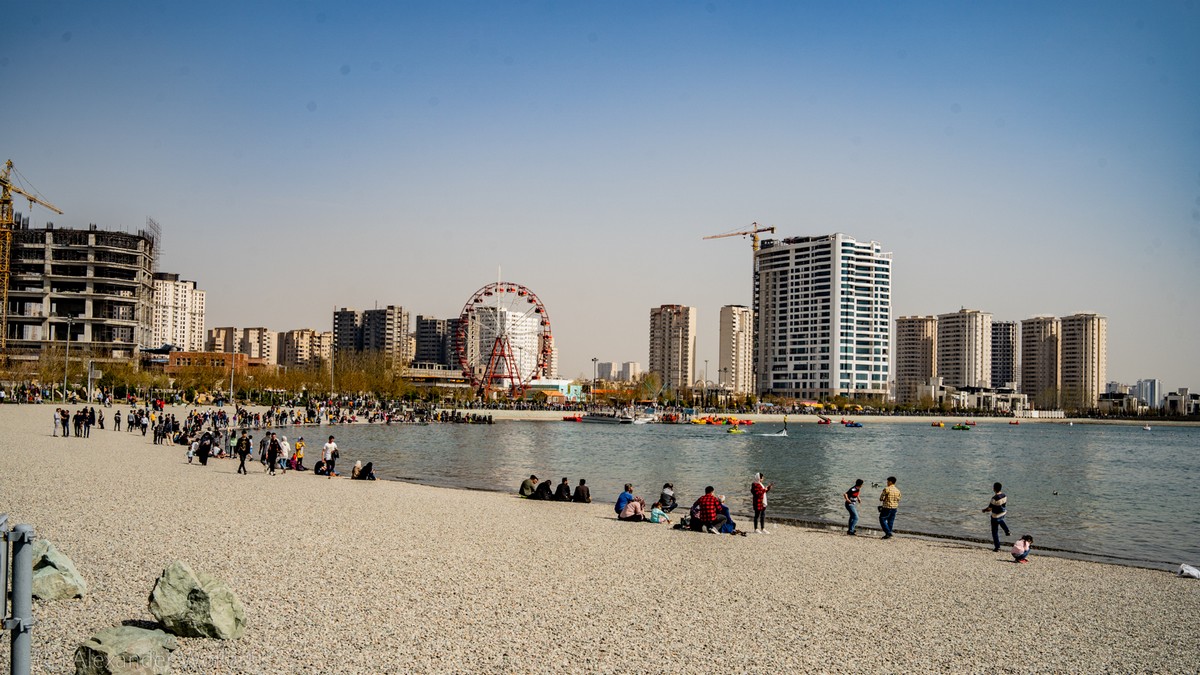
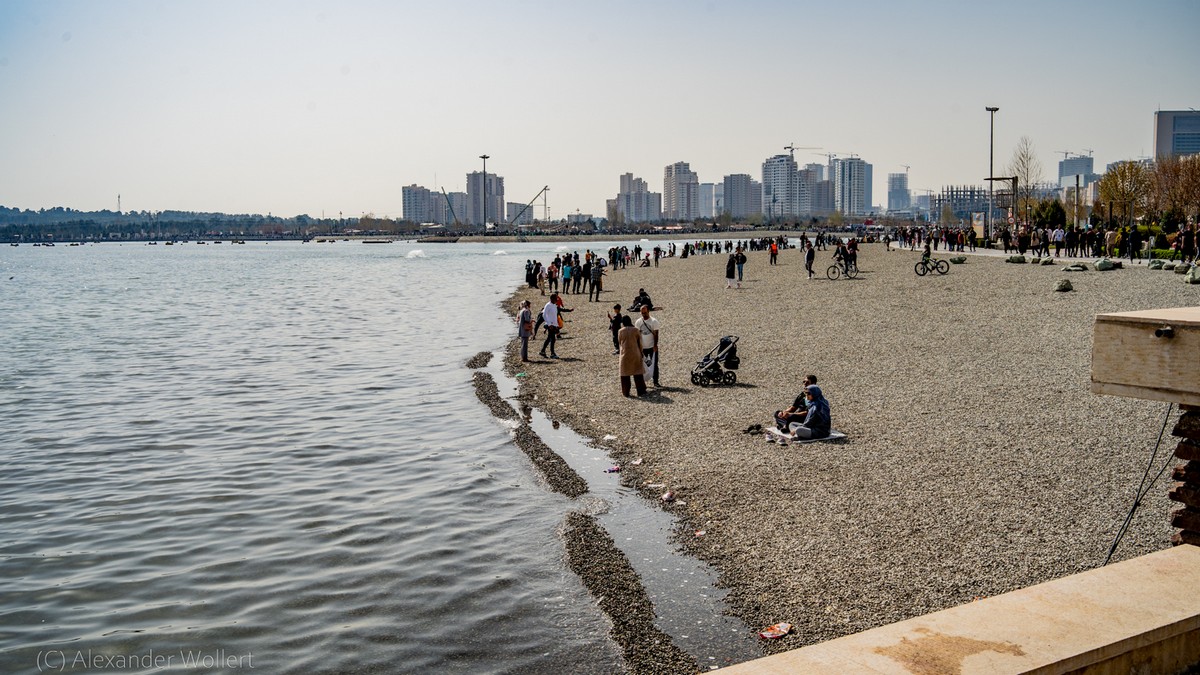
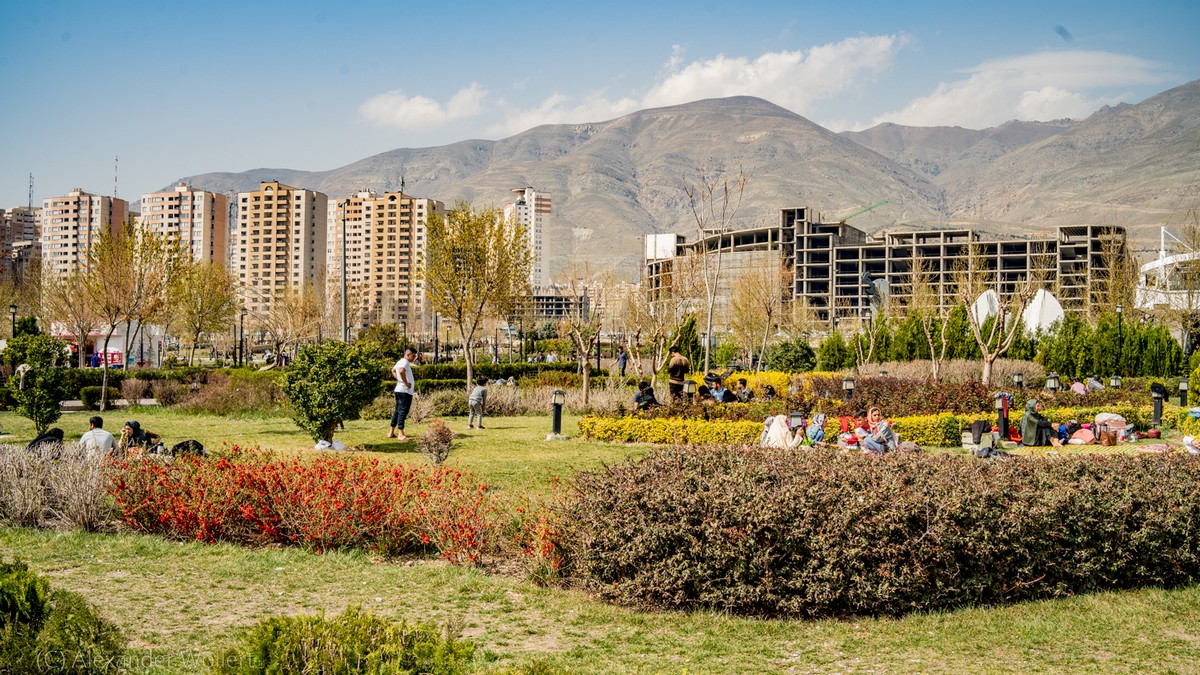
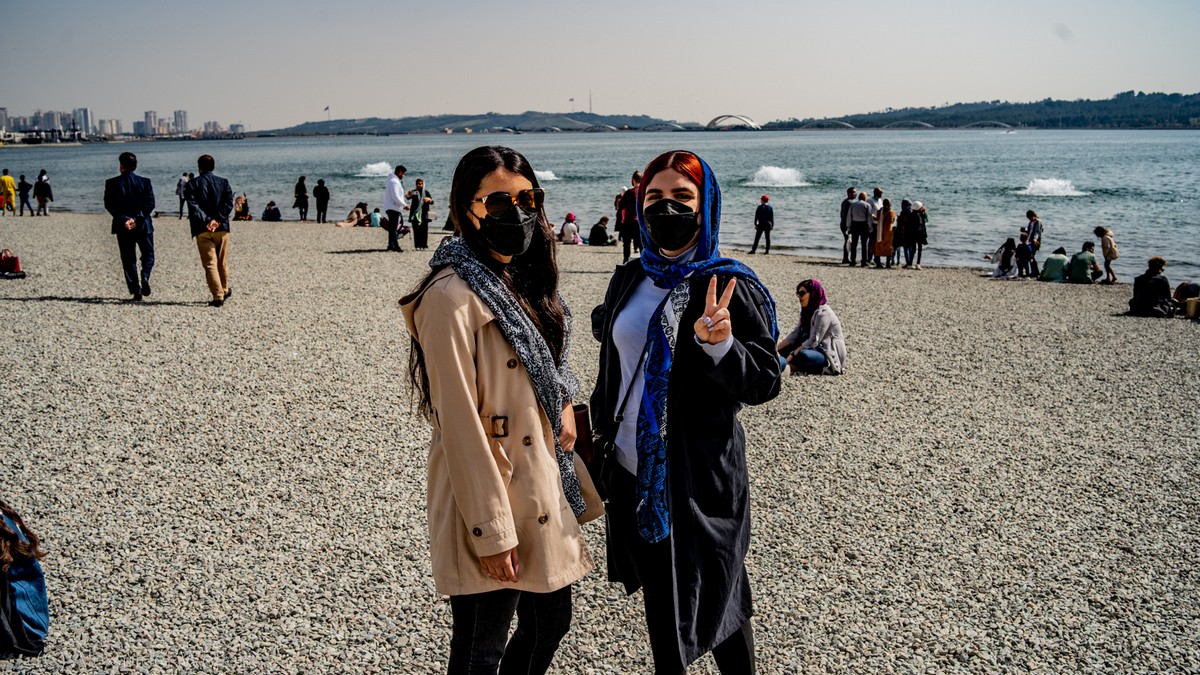
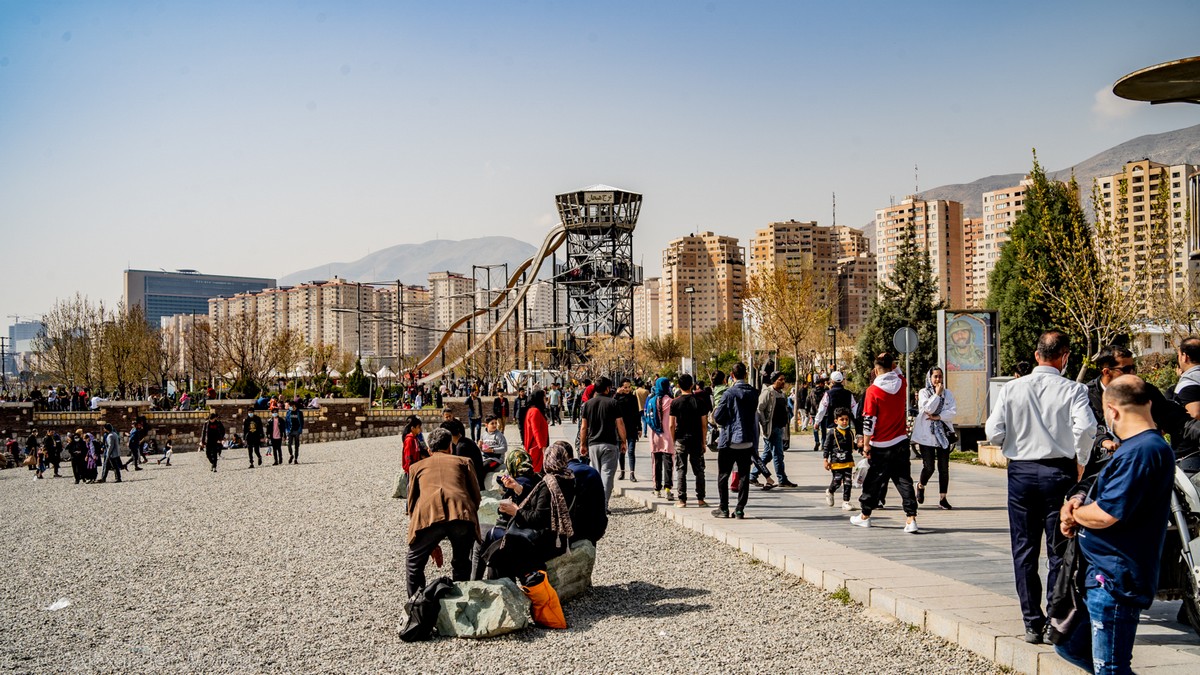

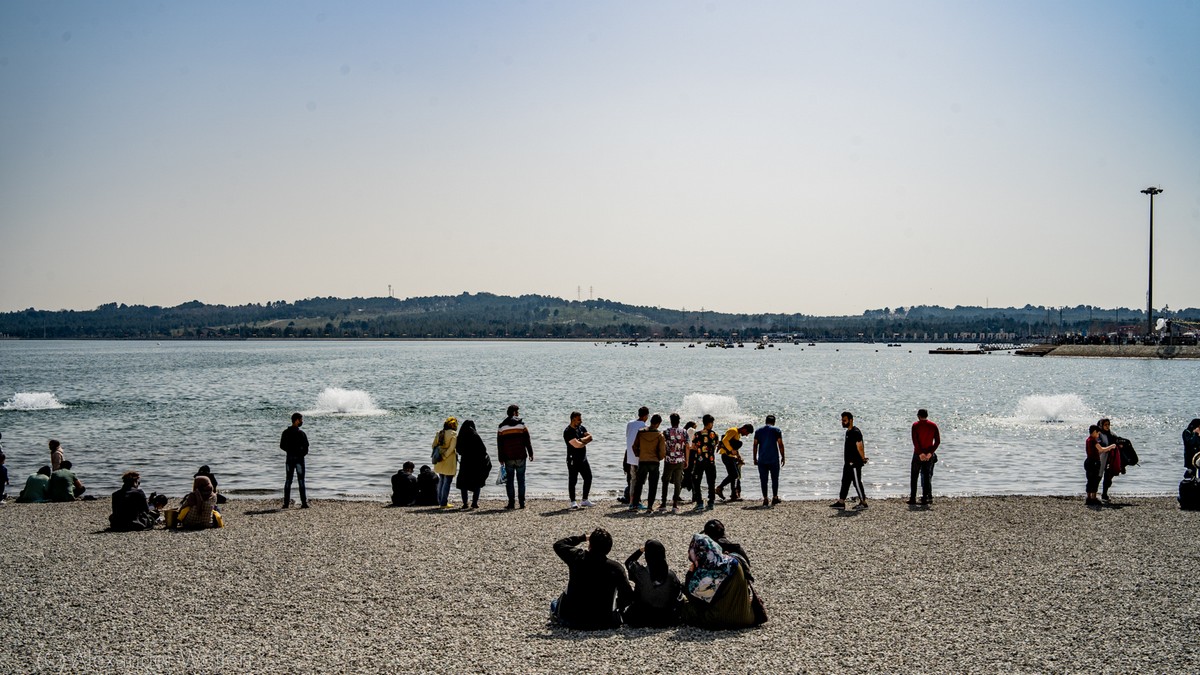
Time in Tehran goes by far too quickly. Once again the Persian hospitality showed itself in all facets and I had an exciting come back after the last trip. Thanks to Sara and my numerous Persian friends, my vocabulary has expanded significantly in the meantime.
I’m excited to get to know the capital again in the future when it’s not in Noruz and in its normal state. Now the metropolis seemed to be asleep as people are on vacation. For me it goes further into nature, the mountains and a very special one: the Damavand volcano.

